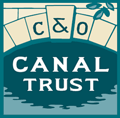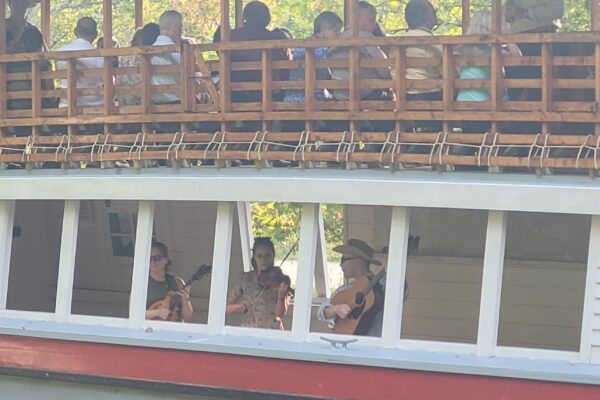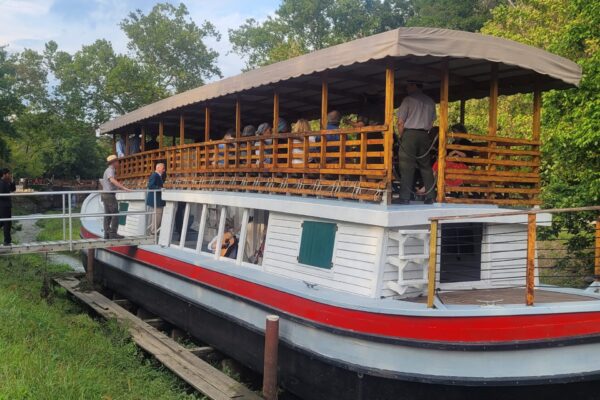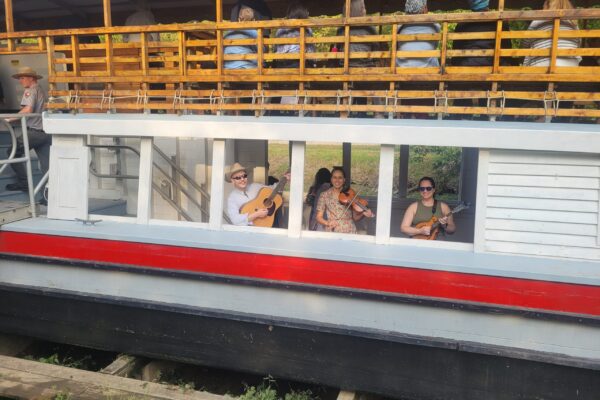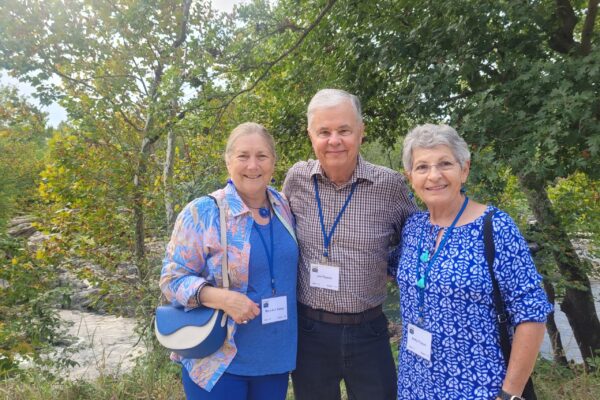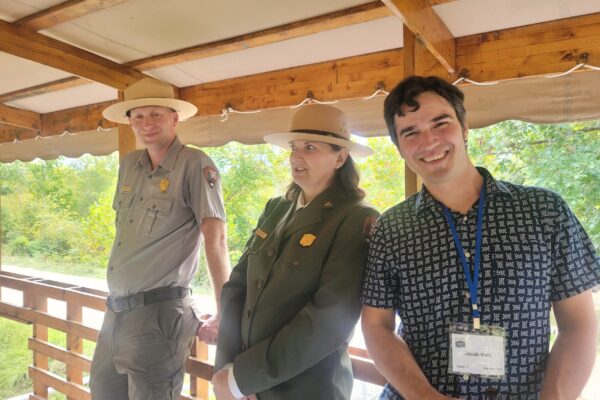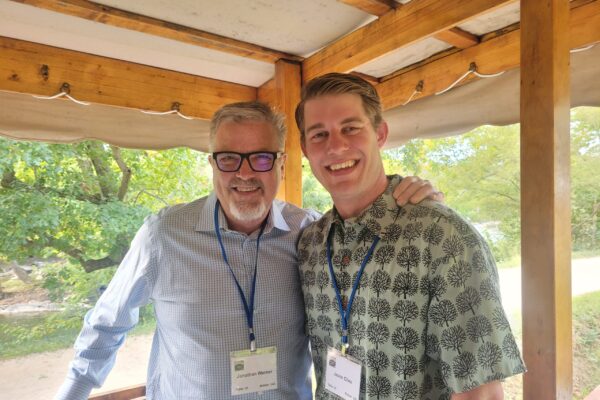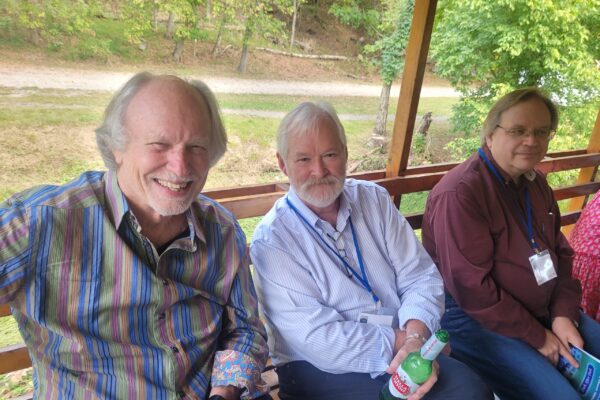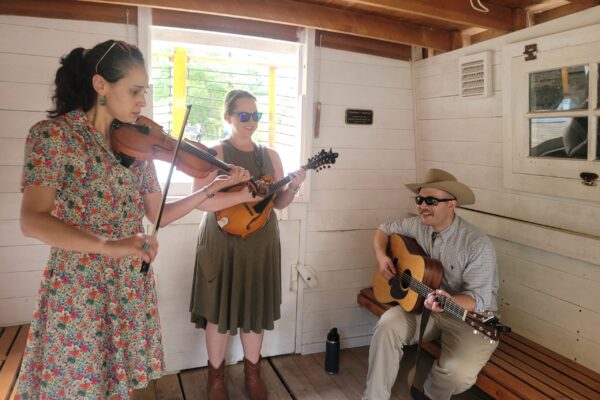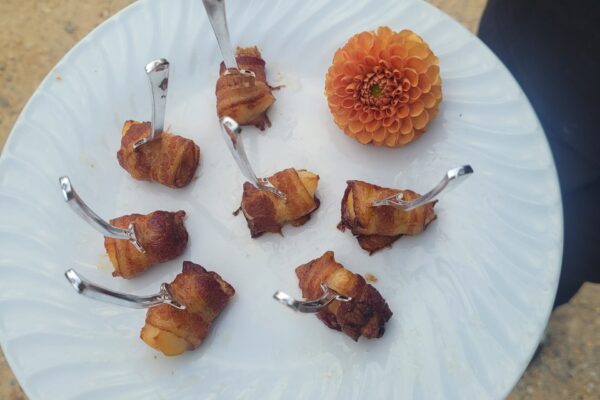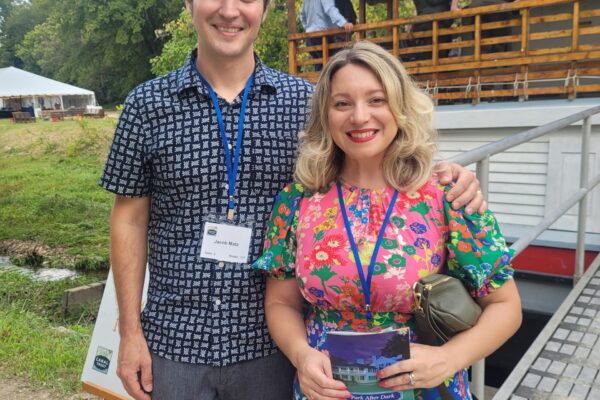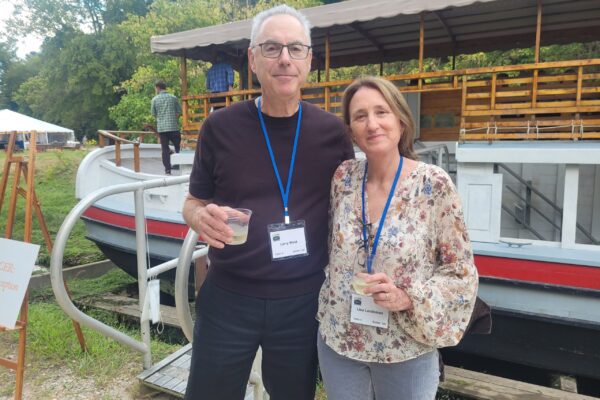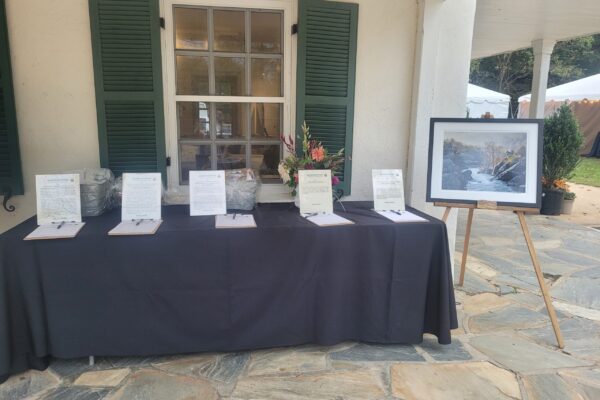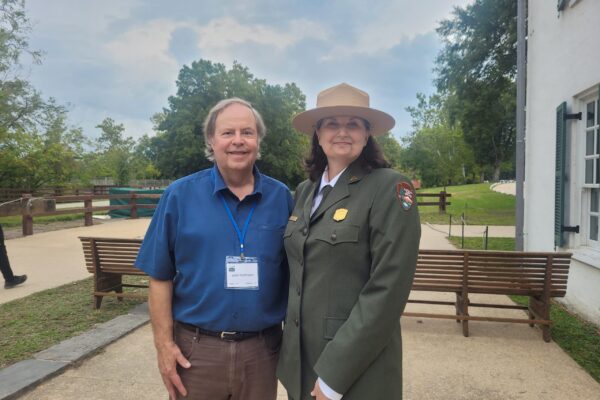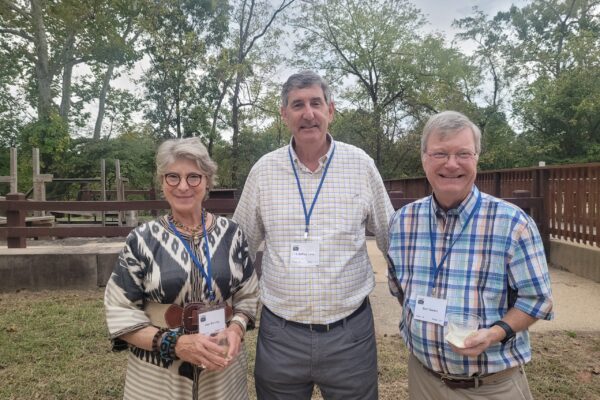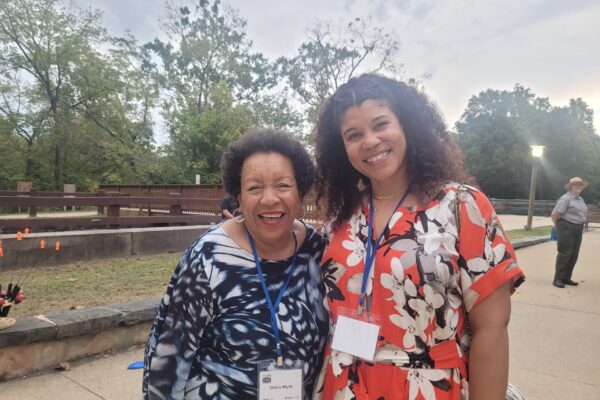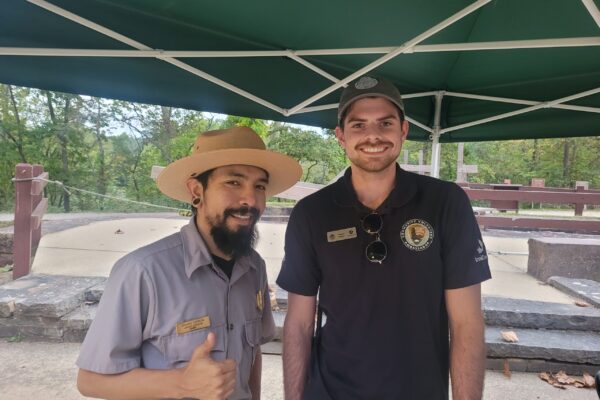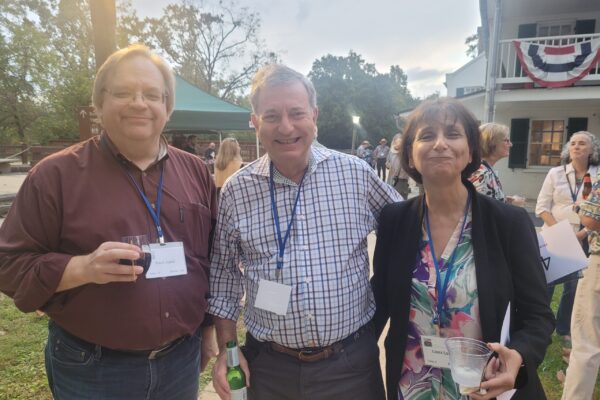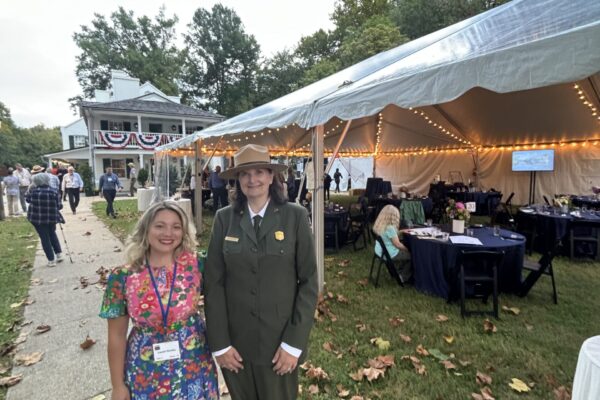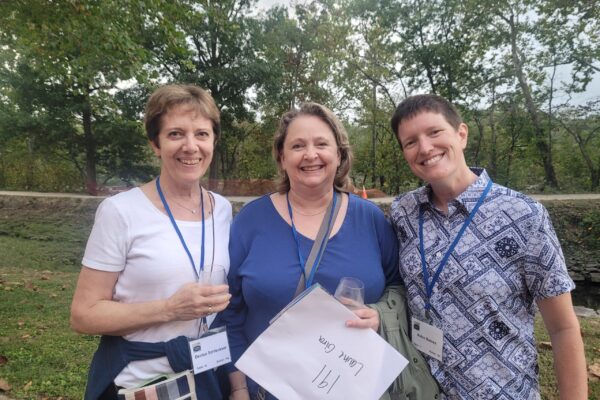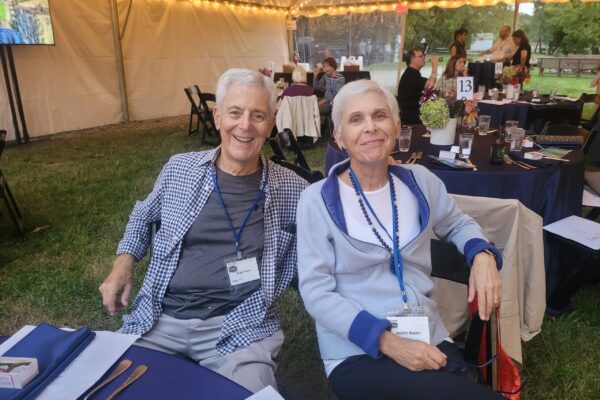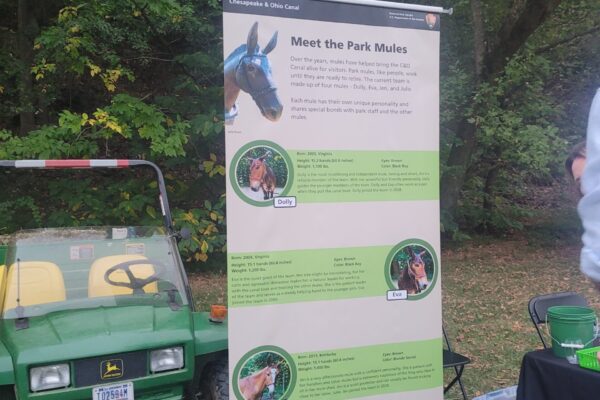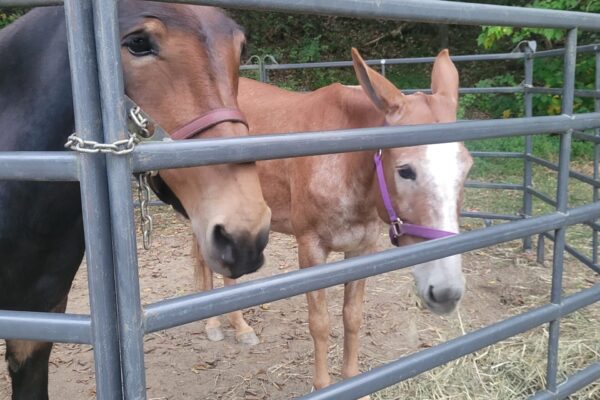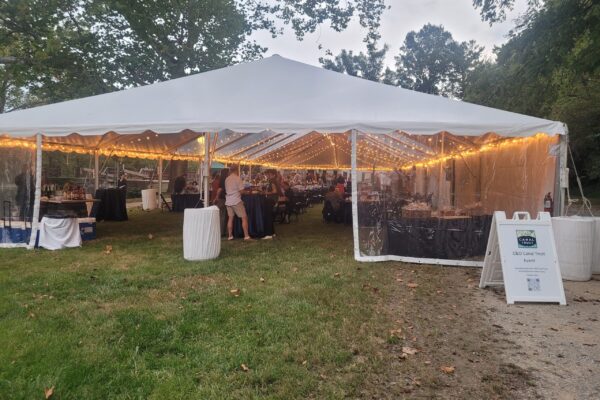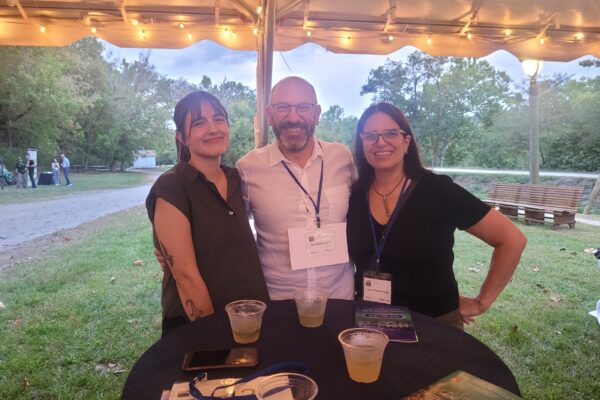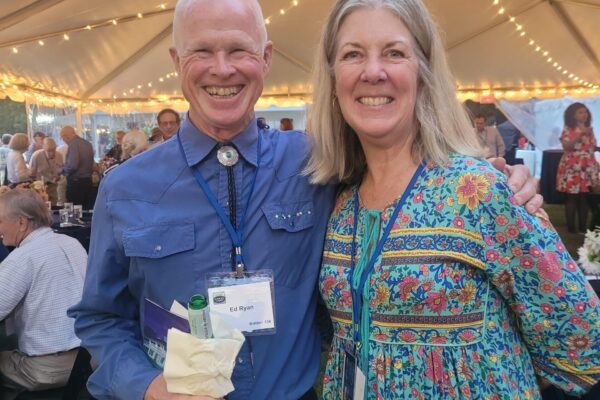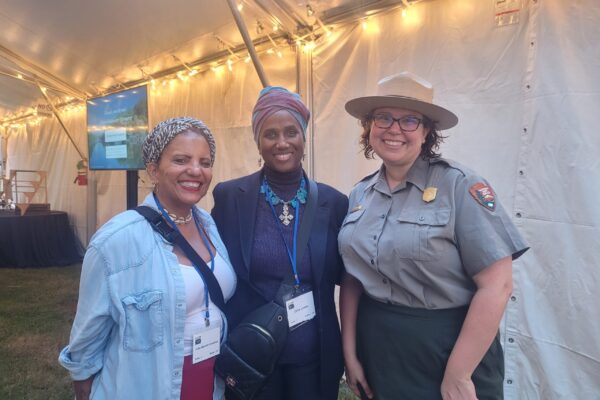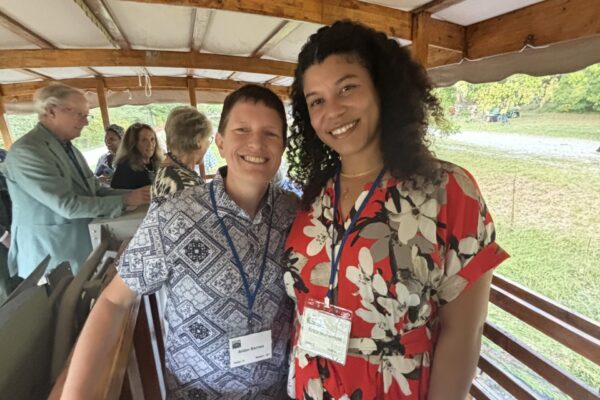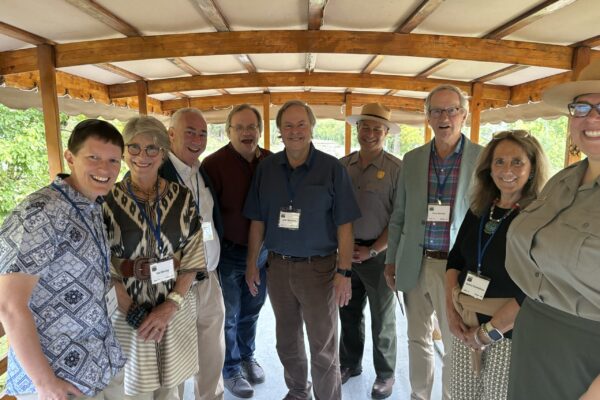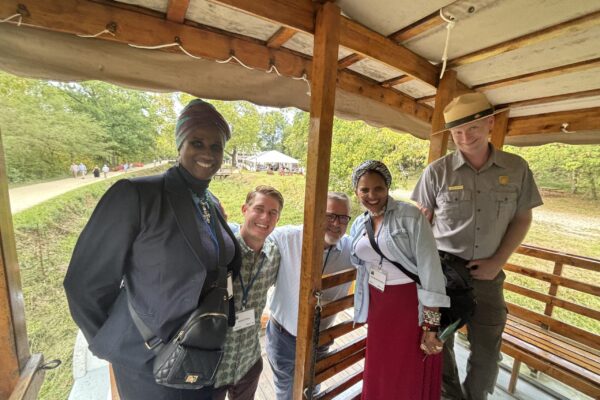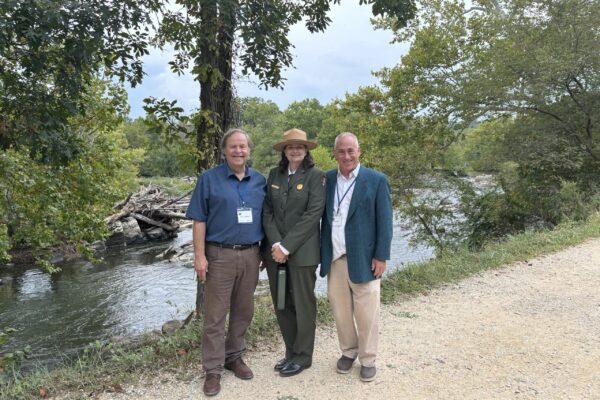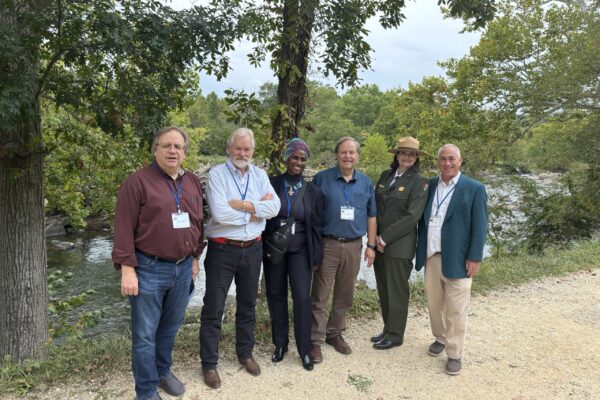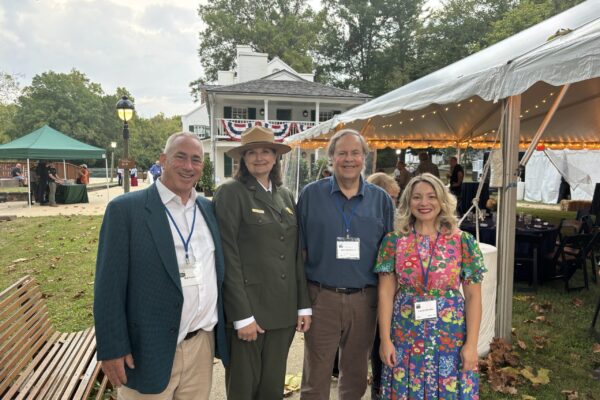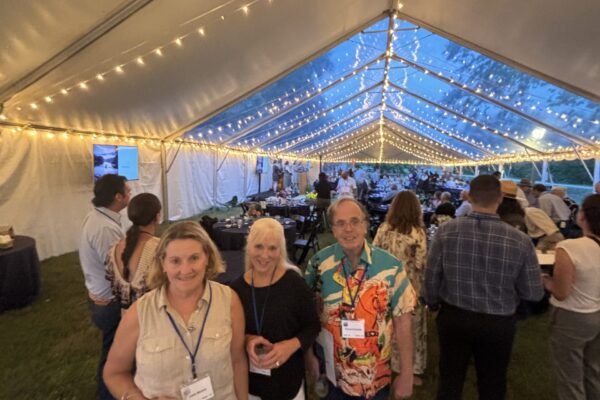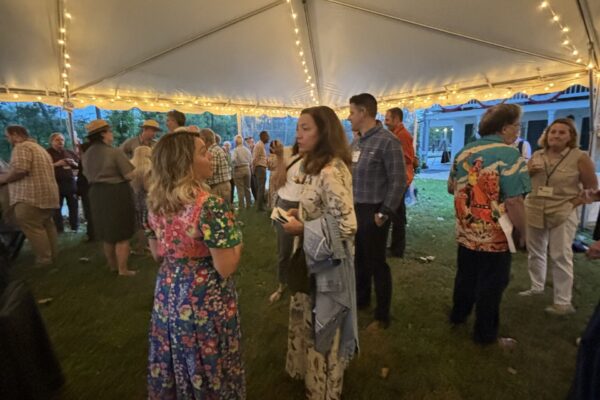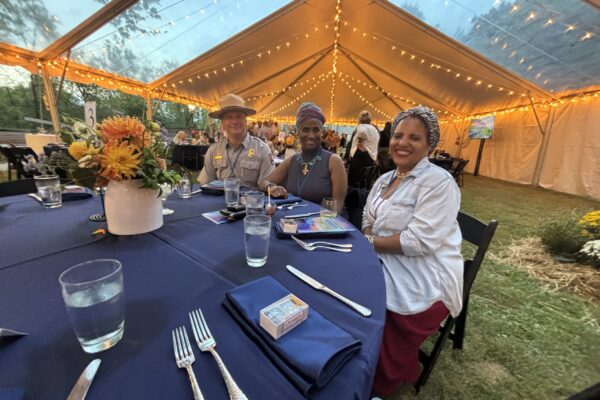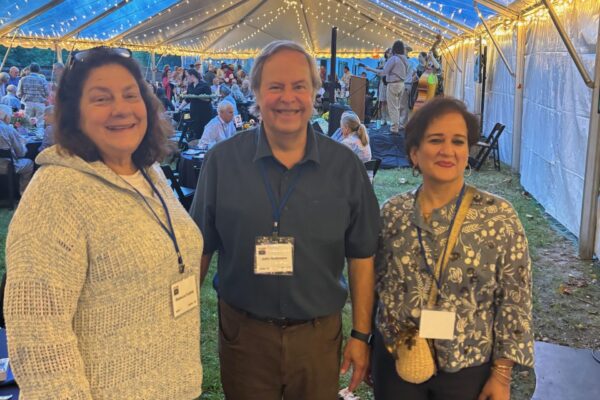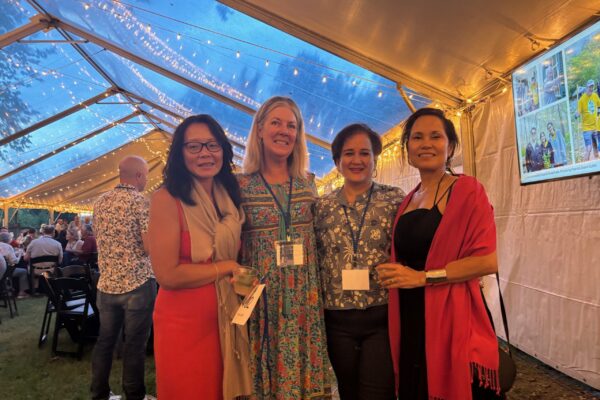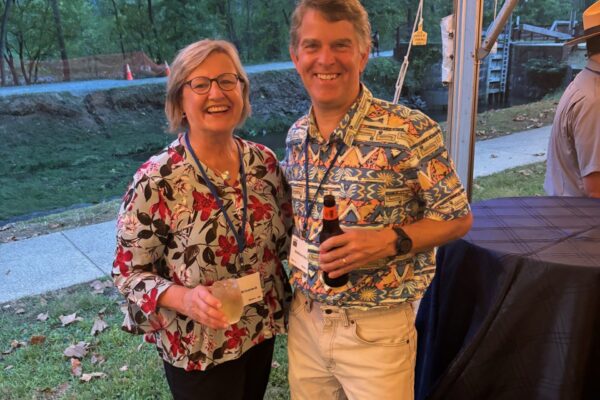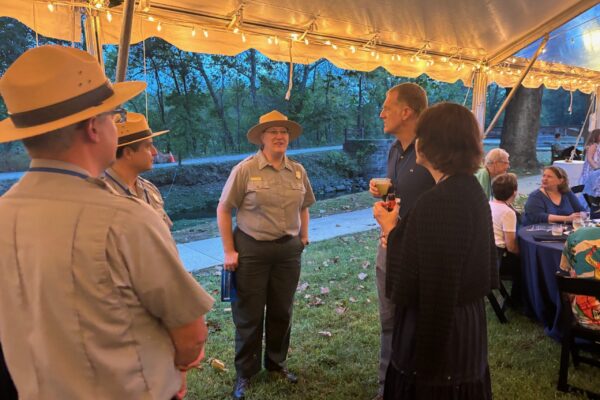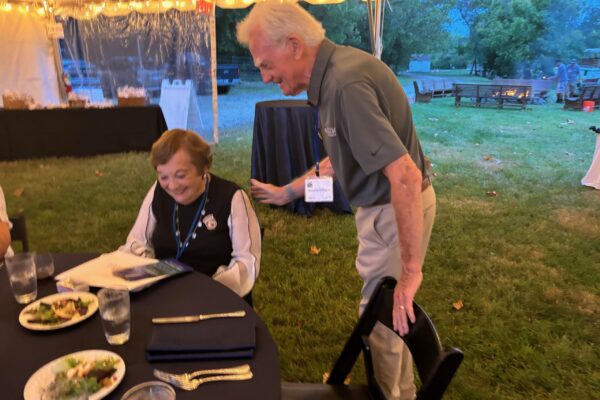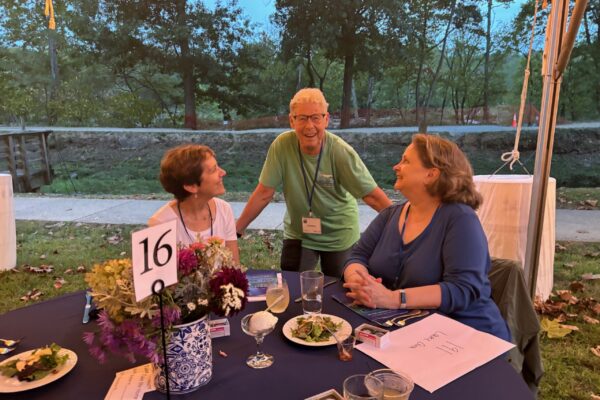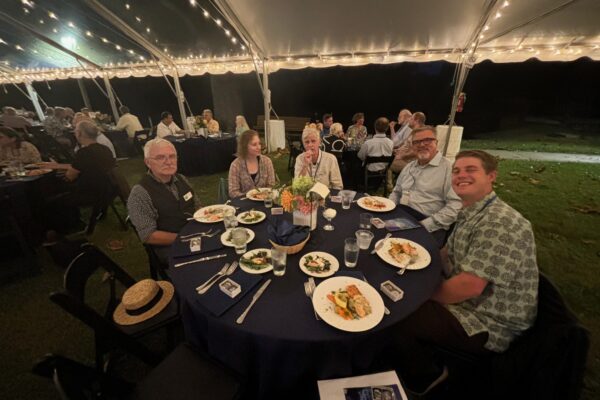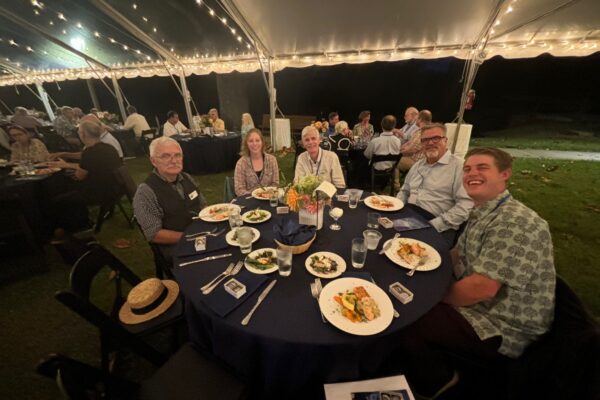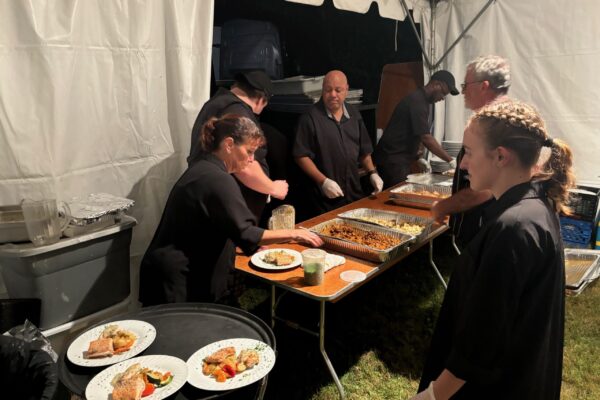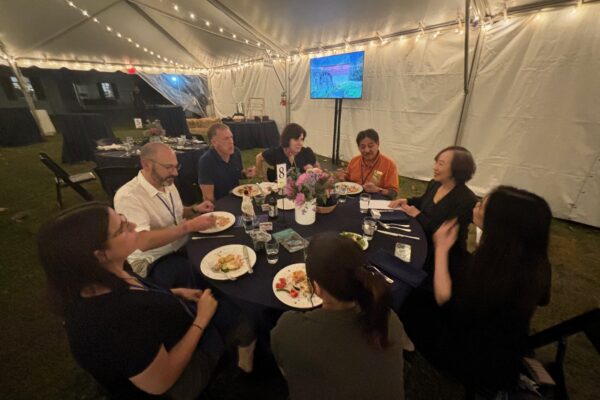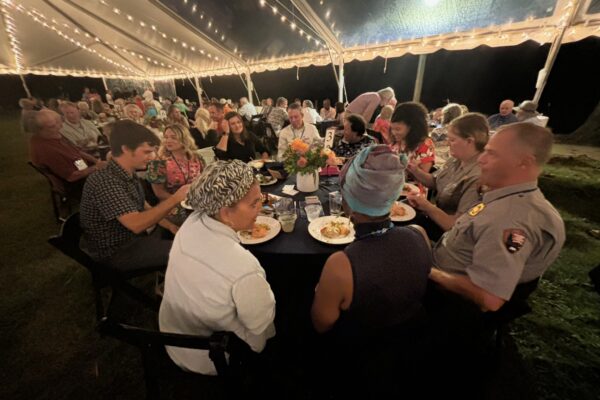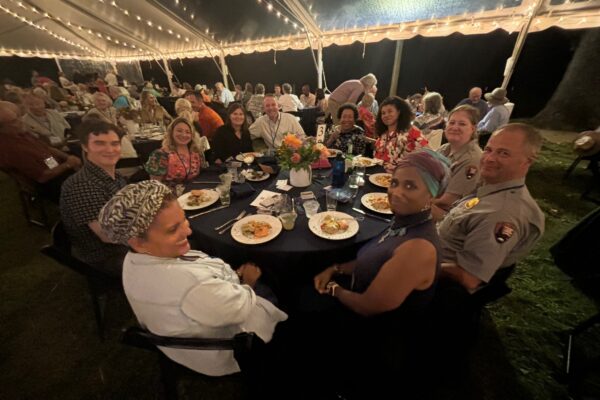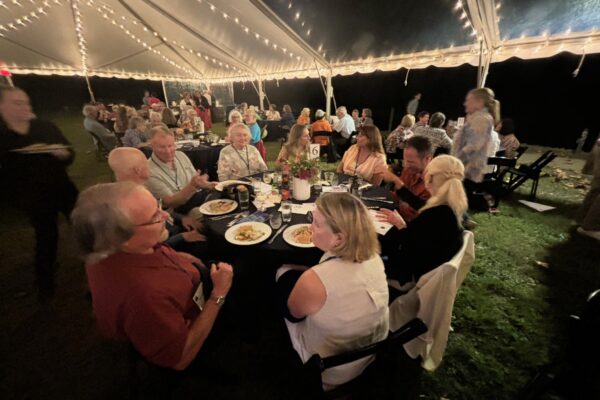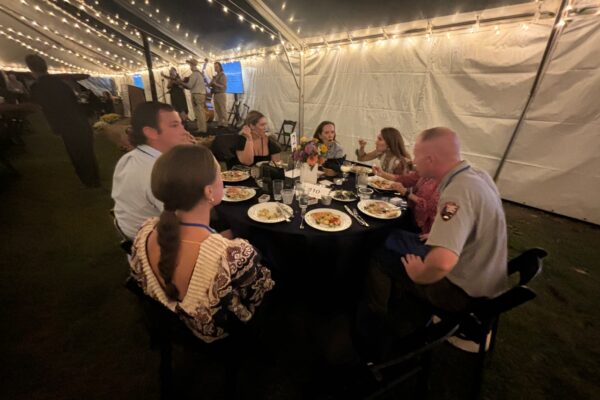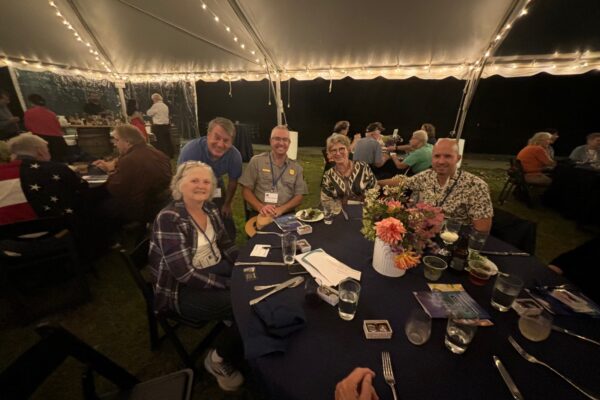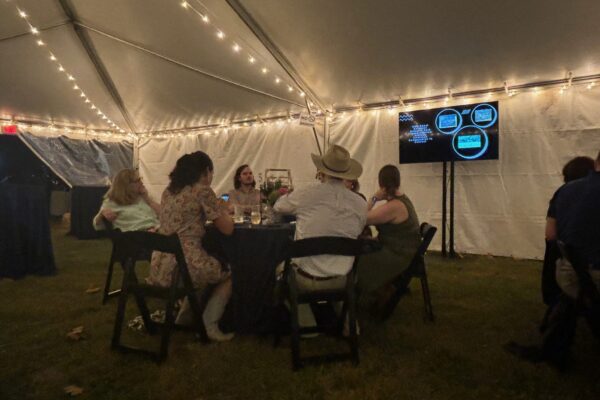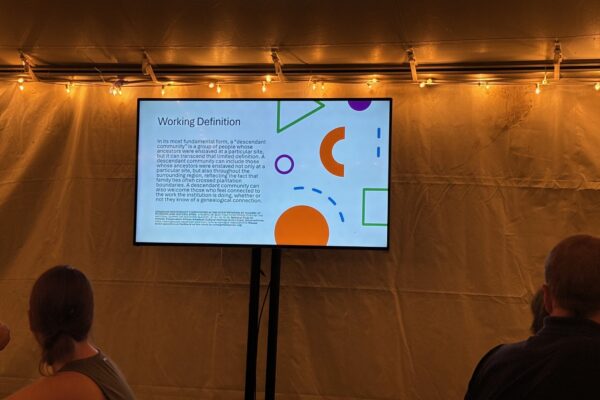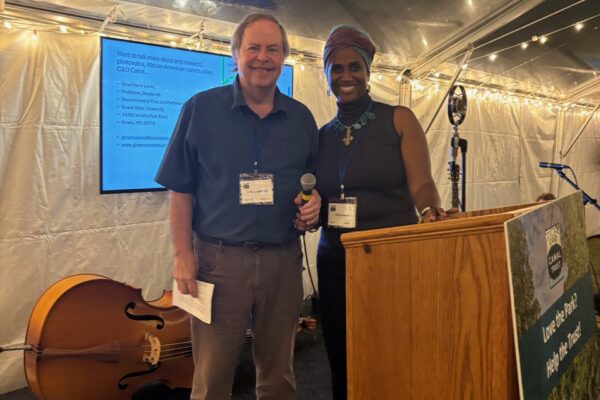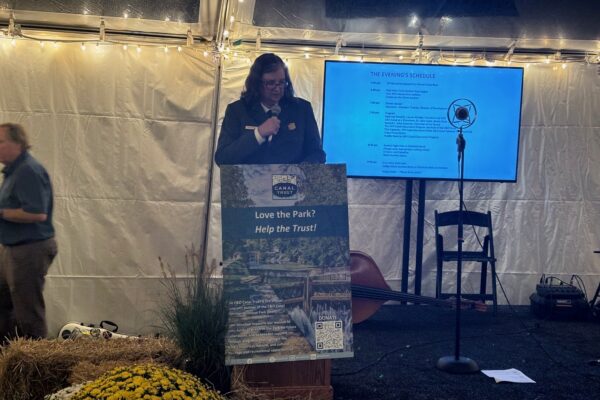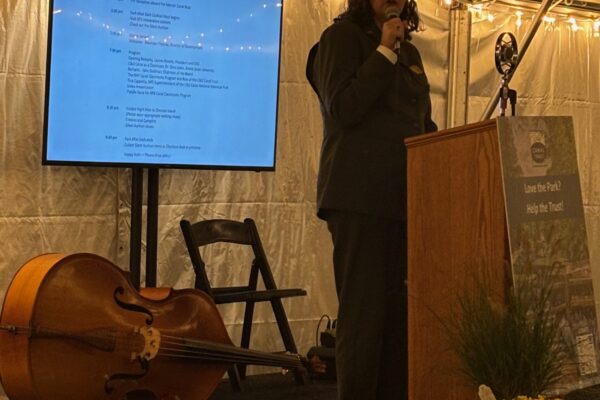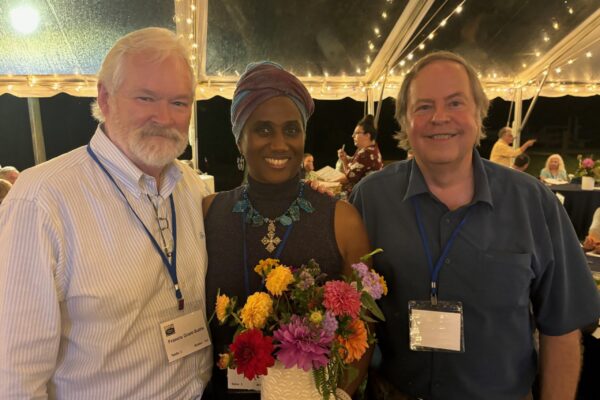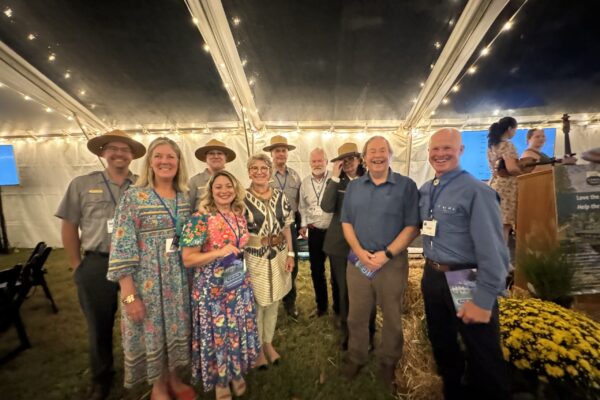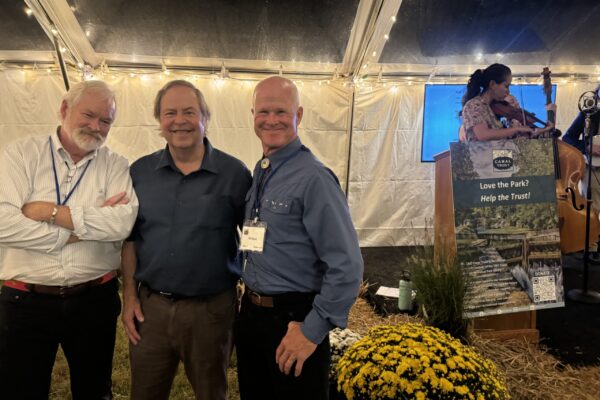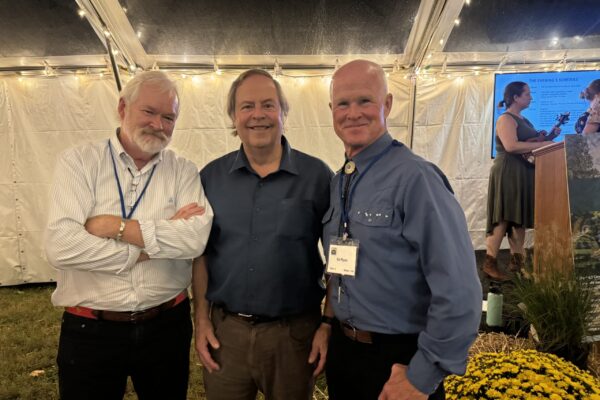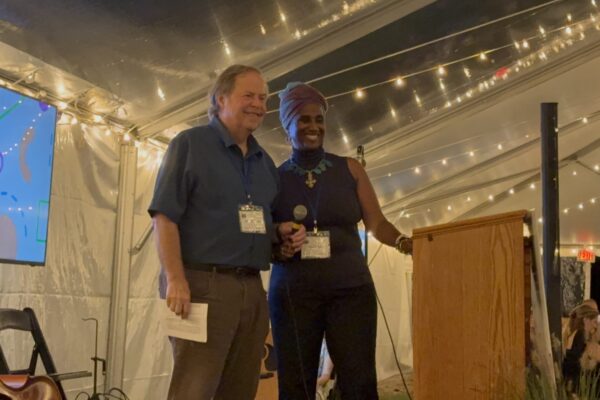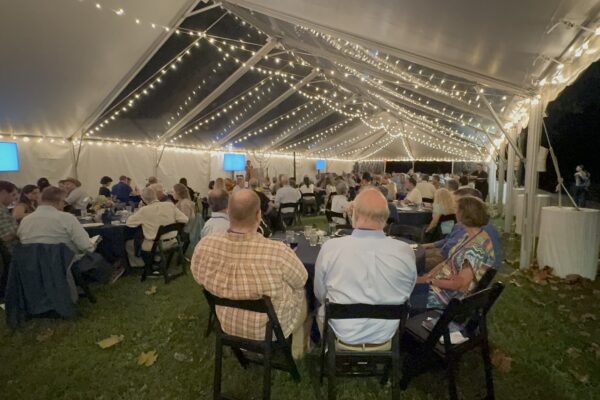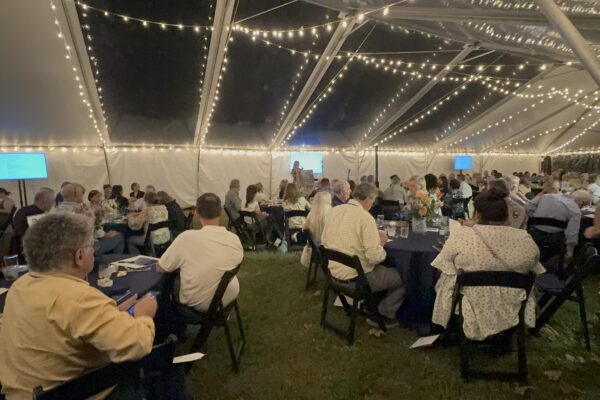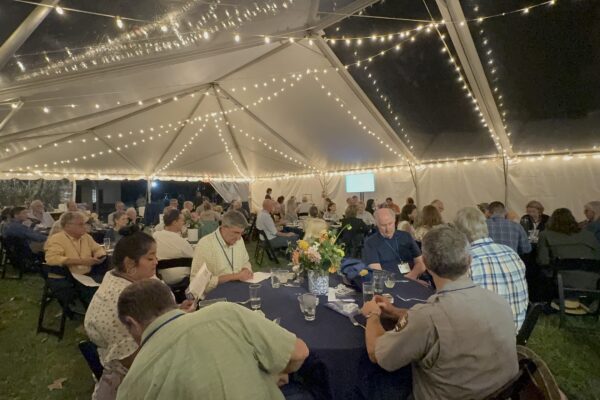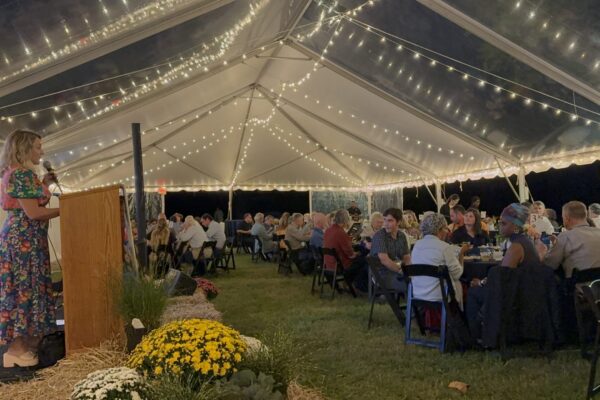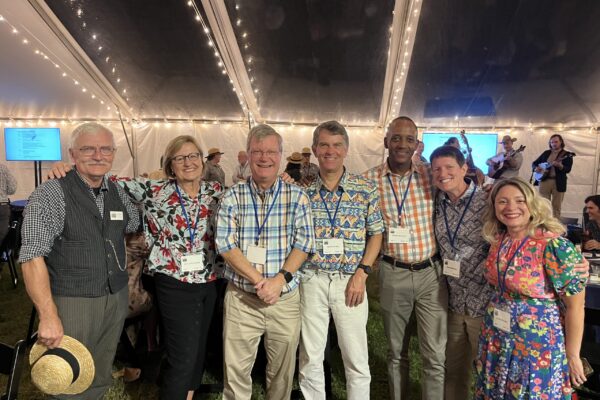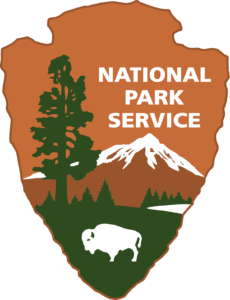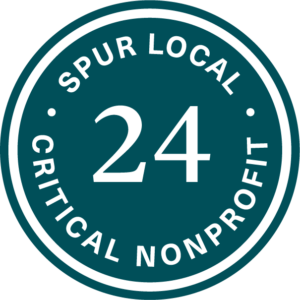
Photo by Francis Grant-Suttie
NPS Park Ranger Amanda Zimmerman was one of the many people who joined us out in the park on April 25 for the C&O Canal Trust’s annual public Canal Community Days volunteer event at Great Falls. Nearly 100 volunteers attended, and despite the cold and rainy day, they made an enormous impact in one of the most popular sections on the 184.5 mile stretch of the C&O Canal towpath. Read More
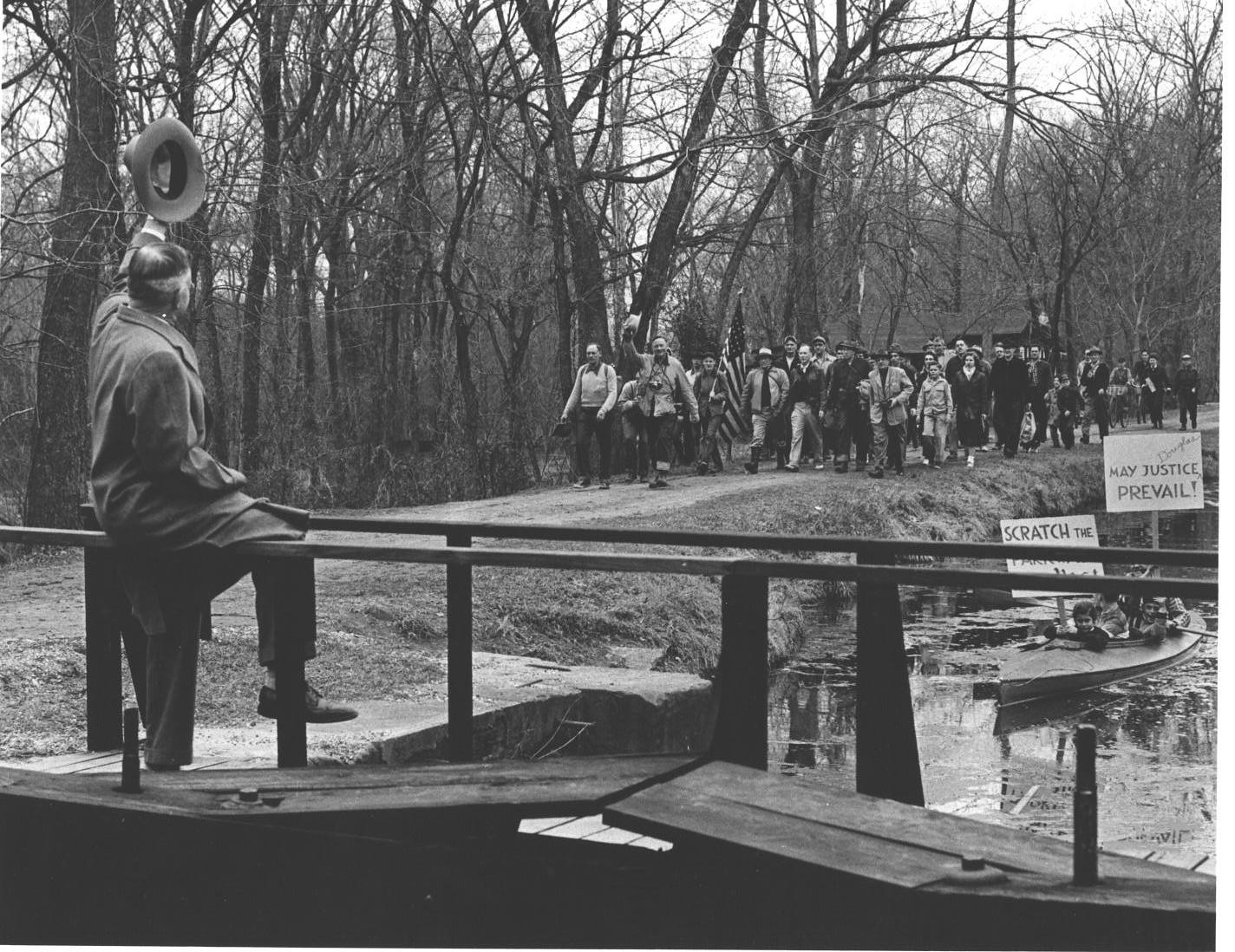
Photo Credit: NPS
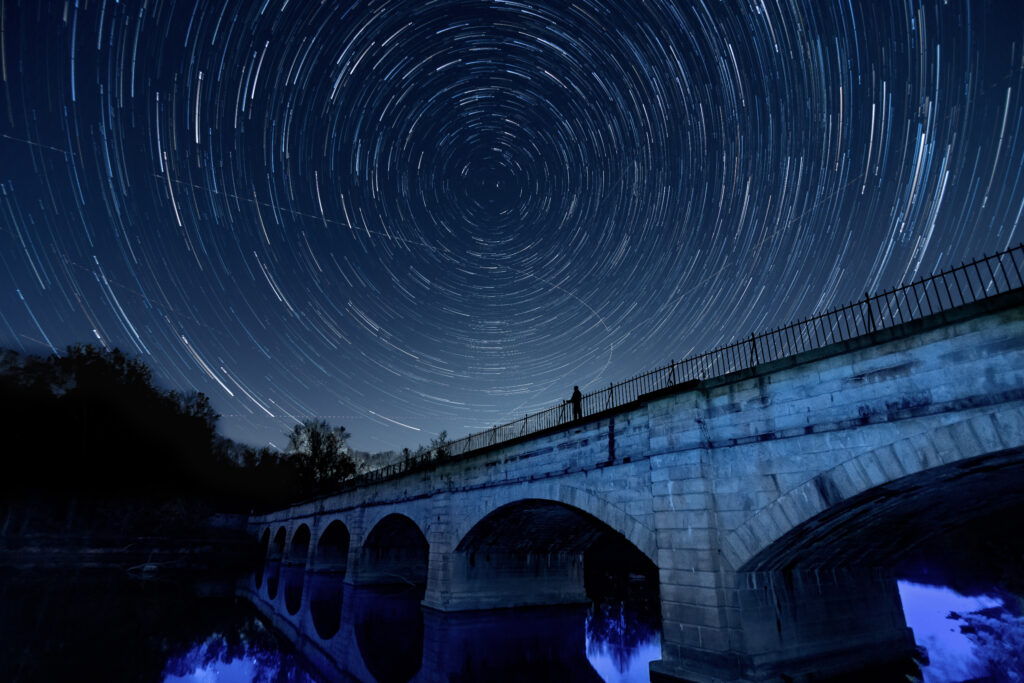 “Dreaming” at the Monocacy Aqueduct by Kim Cawley
“Dreaming” at the Monocacy Aqueduct by Kim Cawley
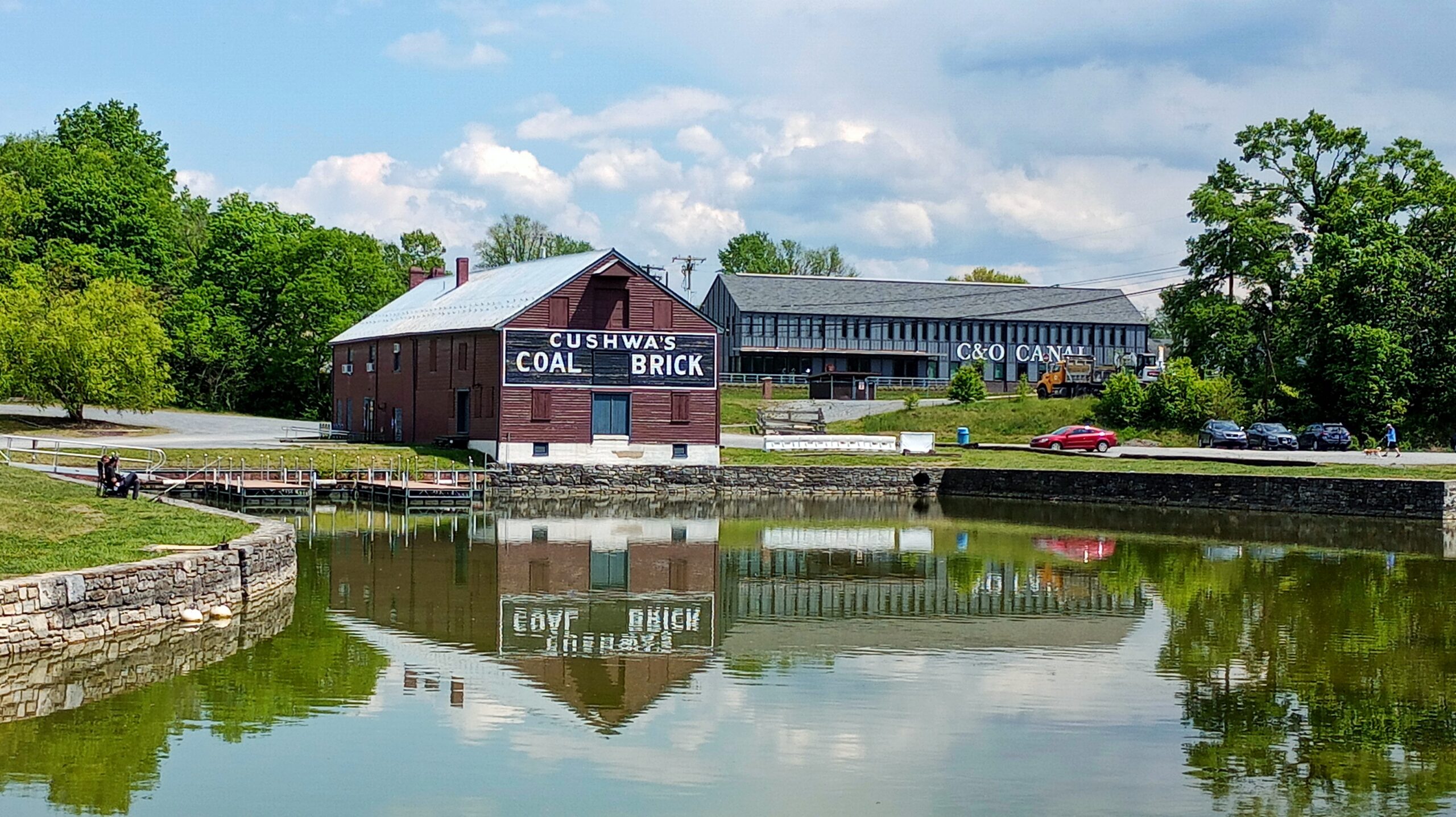
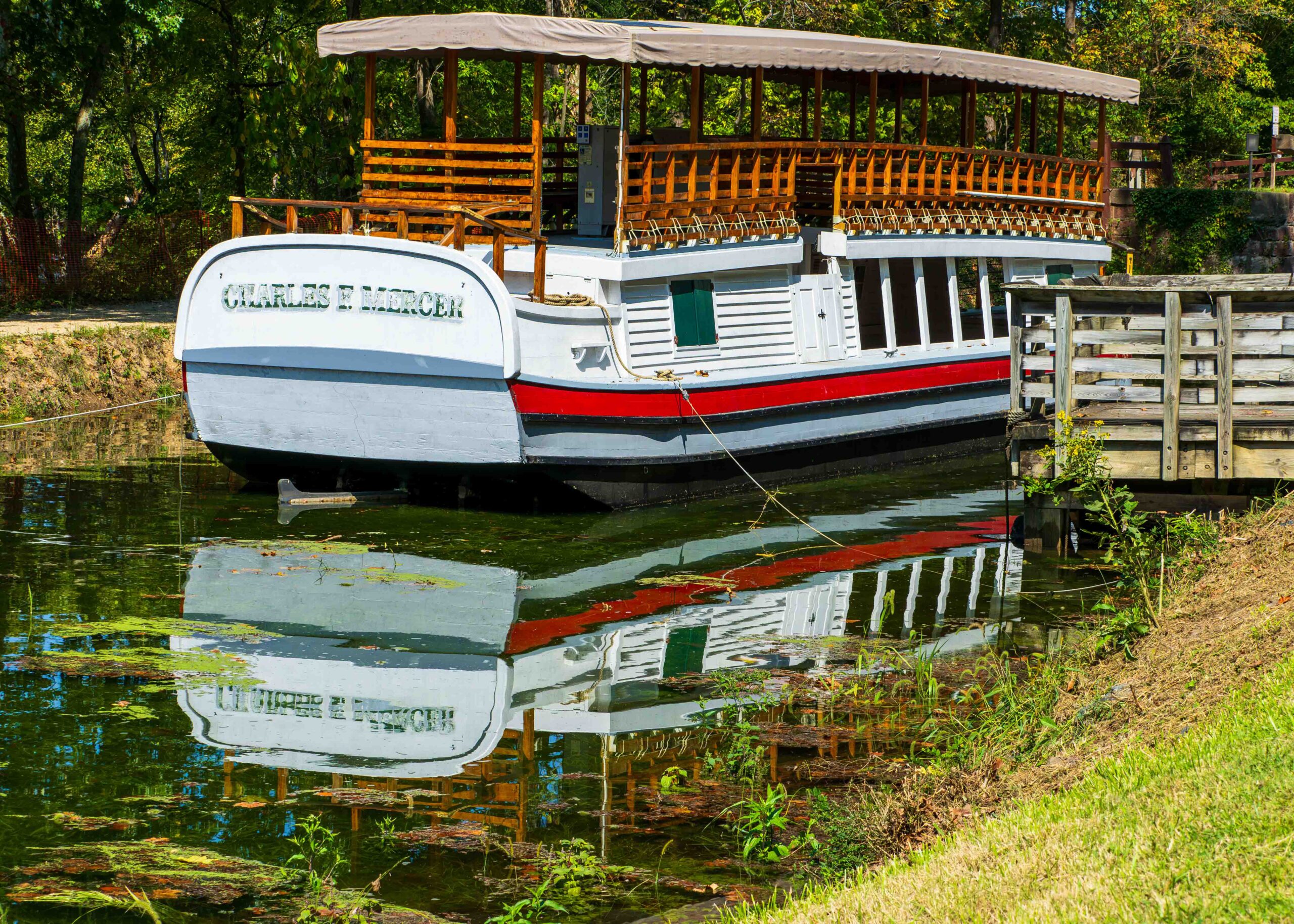
Image Credit: Francis Grant-Suttie
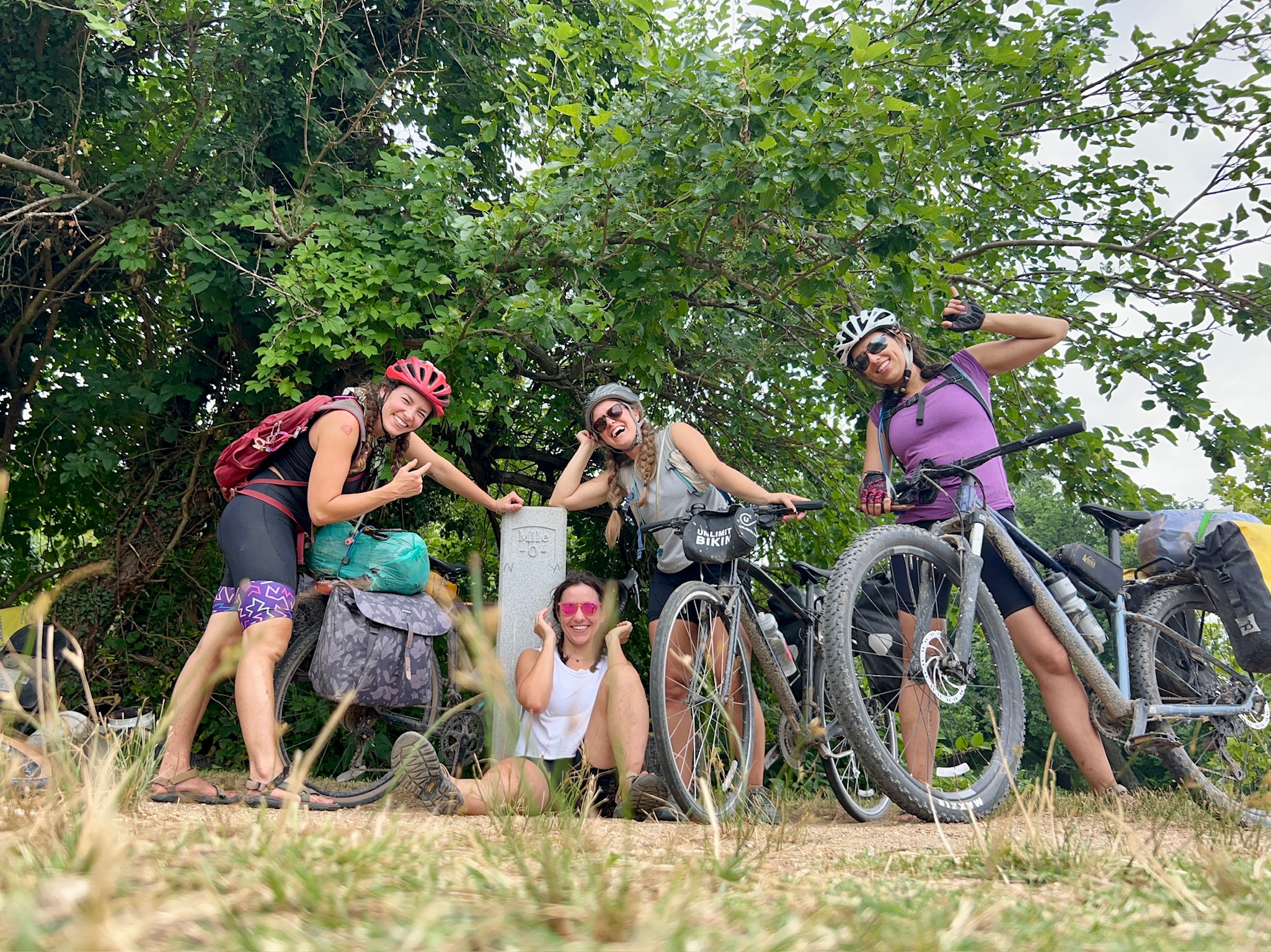
Celebrate your love for the C&O Canal by sharing your personal story about the Park. Each story will take a look at a person’s relationship with the C&O Canal. Whether an NPS ranger, a volunteer, or a visitor, everyone has a story to tell about the canal! If you want to share your story, fill out the form below, email it to us at [email protected] or post it on your social media feeds with the hashtag #MyCanalStory. We could use your story here on our website!
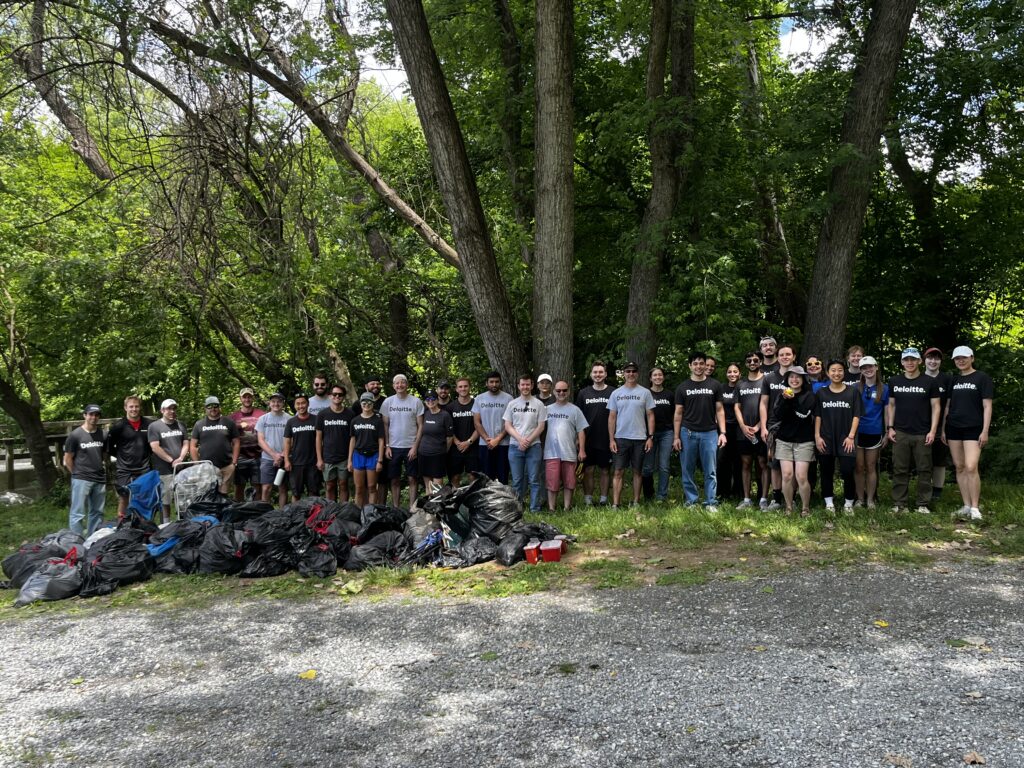 Photo by Trust Staff
Photo by Trust Staff
Read More
During National Preservation Month, Trust President & CEO Lauren Riviello joined Preservation Maryland’s PreserveCast to discuss activating historic resources. With topics ranging from how she came to work with non-profits to the C&O Canal Trust’s award-winning Canal Quarters interpretive program, this is an episode you don’t want to miss.

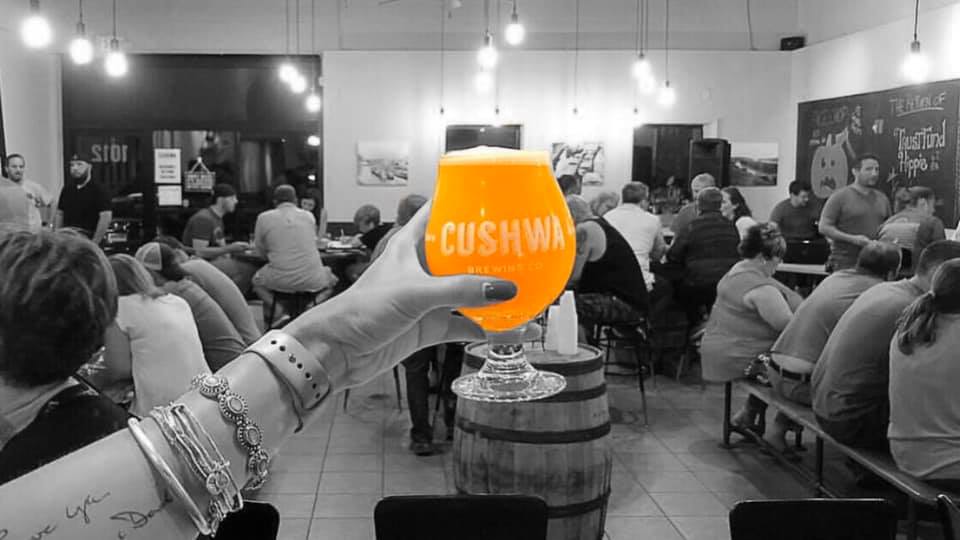
Along the 184.5 mile length of the towpath, there are many small towns and communities where visitors can explore, shop, eat and sleep. In chillier months, Park lovers can find refuge among cozy cafes or warm up with a craft beer in one of the many local breweries.
Celebrate FeBREWary this year by visiting each of these canal towns in the Canal Towns Partnership and check out these featured cafes and breweries.
Poolesville, MD
(Mile Marker 30.9, 35.5)
Locals Farm Market
19929 Fisher Avenue, Poolesville, MD 20837
4.7 miles from the towpath at Edwards Ferry
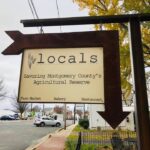
Photo from Locals (Facebook)
Brunswick, MD
(Mile Marker 55)
Smoketown Brewing Station
223 W. Potomac Street Brunswick, MD 21716
0.3 mile walk/bike from C&O Canal
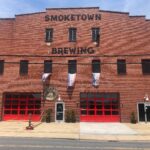
Photo by Ester Herberts
Beans in the Belfry
223 W. Potomac Street Brunswick, MD 21716
0.3 mile walk/bike from C&O Canal
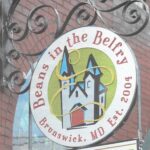
Photo from Beans in the Belfry (Facebook)
Harpers Ferry, WV
(Mile Marker 60.7)
Battle Grounds Bakery & Coffee
180 High St, Harpers Ferry, WV 25425
0.4 mile walk/bike from C&O Canal Lock 33
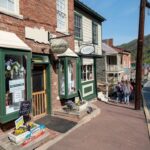
Photo by Joe Hainey
Harpers Ferry Brewing
37412 Adventure Center Lane, Purcellville, VA 20132
2.5 miles from the towpath in Harpers Ferry
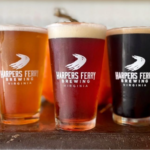
Photo from Harpers Ferry Brewing (Instagram)
H.B. Snallygaster’s General Store & Cafe
1102 W. Washington Street, Bolivar, WV 25425
1.6 miles from Maryland Heights Trailhead

Photo from H.B. Snallygasters (Facebook)
Bolivar, WV
(Mile Marker 60.7)
Rations Roasters
1271 Washington Street, Bolivar, WV 25425
2.2 miles from C&O Canal towpath
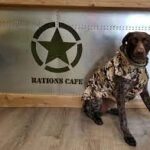
Photo from Rations Roasters (Facebook)
Shepherdstown, WV
(Mile Marker 76.8)
Bavarian Inn, Resort and Brewing Company
164 Shepherd Grade Road, Shepherdstown, WV 25443
0.7 mile walk/bike from the C&O Canal

Photo by Bavarian Brothers Brewing
Lost Dog Coffee Fine Arts Drink Emporium
134 E German Street, Shepherdstown, WV 25443
1.0 mile walk/bike from the C&O Canal
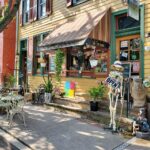
Photo from Lost Dog Coffee (Facebook)
Shepherdstown Sweet Shop and Bakery
100 W German Street, Shepherdstown, WV 25443
1.0 mile walk/bike from the C&O Canal
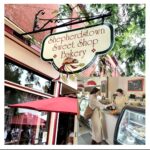
Photo from Shepherdstown Sweet Shop Bakery (Facebook)
Williamsport, MD
(Mile Marker 99.4)
Cushwa Brewing Company
10210 Governor Lane Blvd. #2100, Williamsport, MD 21795
2.5 mile walk/bike from C&O Canal
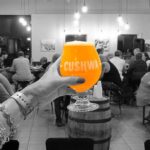
Photo by Cushwa Brewing Company
River Bottom Roasters
10212 Governor Lane Blvd. #1008, Williamsport, MD 21795
2.5 mile walk/bike from C&O Canal

Photo from River Bottom Roasters (Facebook)
Cumberland, MD
(Mile Marker 184.5)
Basecamp Coffee Company
108 Greene Street, Cumberland, MD 21502
0.6 mile walk/bike from C&O Canal

Photo from Basecamp Coffee Co (Facebook)
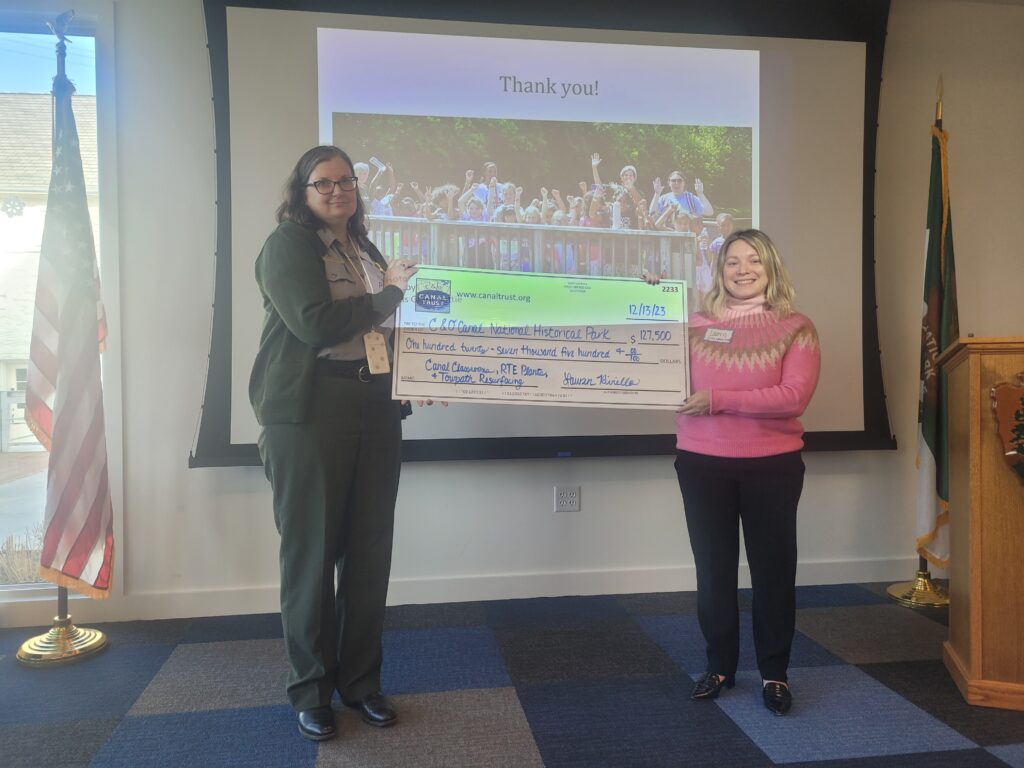
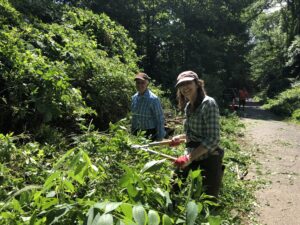 Photo by Trust Staff
Photo by Trust Staff
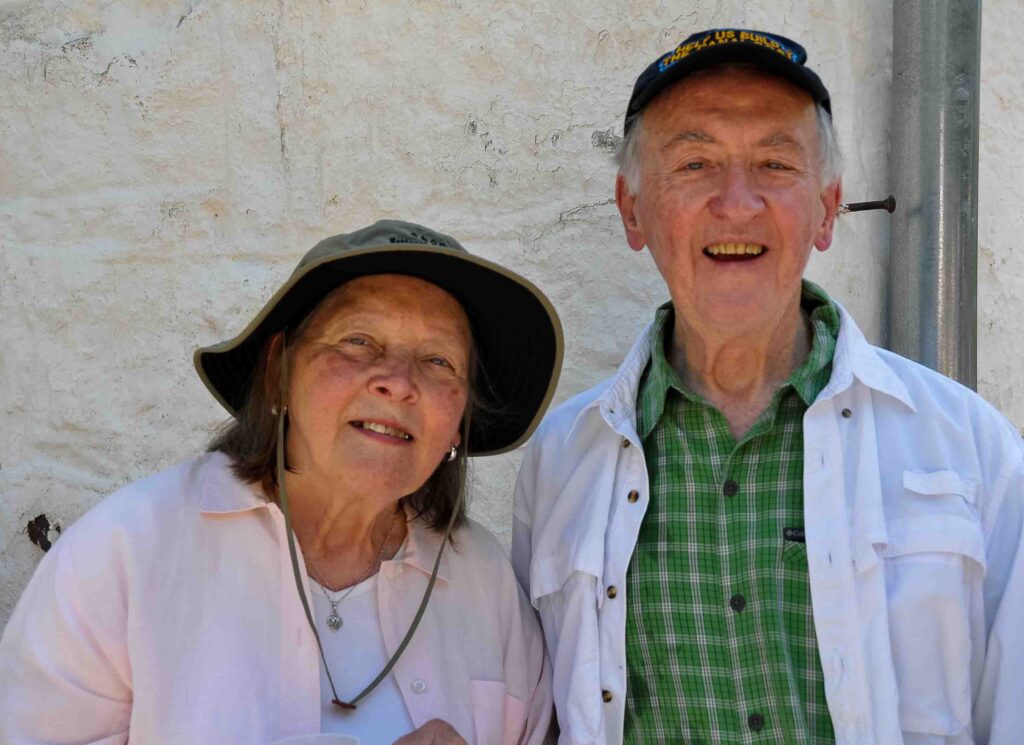
Photo by Francis Grant-Suttie
October 12, 2023, 9 a.m. – 12 p.m.
Weverton, C&O Canal National Historical Park
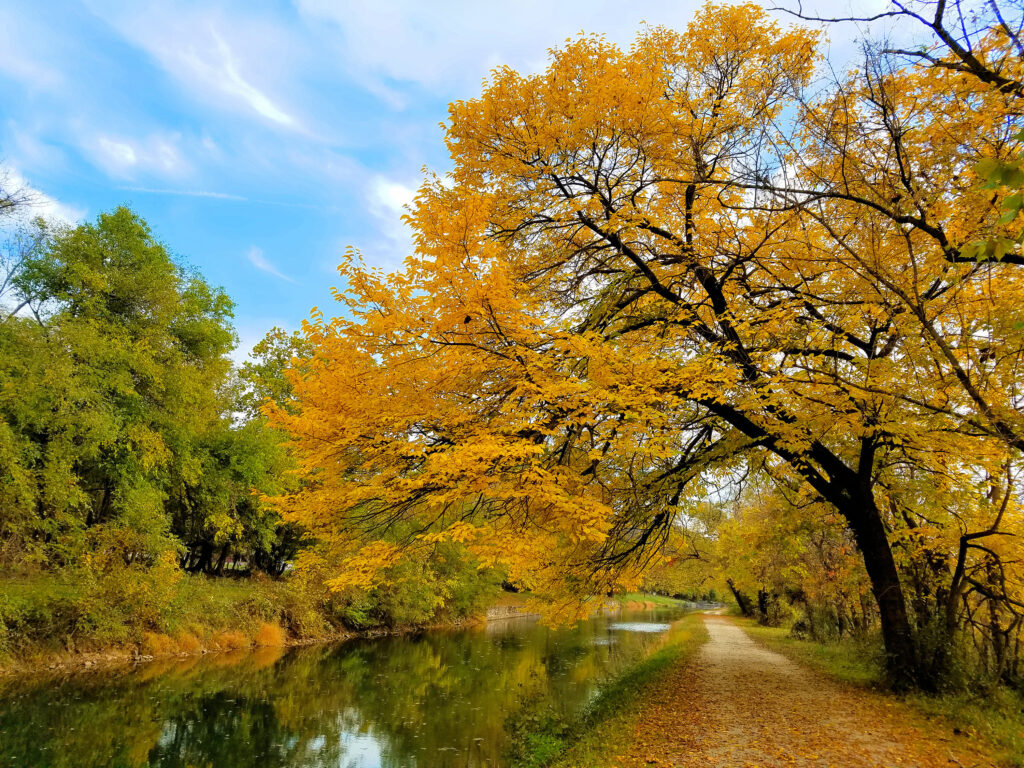
Canal Gold by MJ Clingan
Nestled along the Potomac River, the C&O Canal National Historical Park (NHP) is the perfect place to witness the beauty of nature’s transition into fall. As summer’s warmth gradually gives way to cooler breezes and the days grow shorter, the lush greenery that defines the landscape of the Park begins its shift into a breathtaking display of autumn colors. Once adorned in verdant hues, the trees that line the canal prepare to don their seasonal attire of gold, red, and orange. According to the Farmer’s Almanac’s 2023 fall leaves and peak color forecast, inland parts of Maryland will enjoy peak fall color from October 12-28.
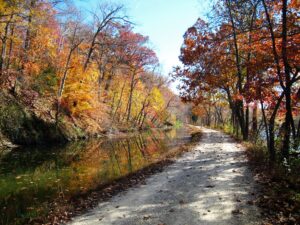
Autumn on the Towpath at Milepost 20 by Keld Wichmann Moeller
Predicting the timing and intensity of fall foliage can be like forecasting the weather – it’s a mix of science and art. Several key factors include rainfall, temperature, daylight duration, and the mix of tree species in the Park. As the days shorten and temperatures begin to cool, the trees respond by producing vibrant pigments that create the iconic reds, oranges, and yellows that define the fall season. A gradual transition from summer to fall, with moderate temperatures and adequate rainfall, yields more vibrant and prolonged displays. A sudden frost or heavy rain, on the other hand, can result in leaves dropping prematurely, impacting the overall experience.
If you’re planning to witness the fall color extravaganza in the C&O Canal NHP, here are a few tips to make the most of your experience:
- Plan Ahead: Monitor local weather forecasts and current Park conditions to gauge the best time for your visit. The Maryland Department of Natural Resources provides a weekly fall foliage report you can subscribe to via e-mail.
- Bring the Essentials: Wear comfortable walking shoes, be sure to have warm layers, and bring your camera or phone to capture the breathtaking scenery.
- Weekday Advantage: Consider visiting on weekdays to avoid crowds and fully appreciate the Park’s tranquility.
- The Towpath and Beyond: The towpath offers a picturesque route for observing the foliage. You can opt for a leisurely stroll, a bike ride, or even a peaceful afternoon picnic. Don’t forget other hiking and walking trails in the Park, like the Billy Goat C Trail and Gold Mine Trail, as well as the beauty found in our Canal Towns during the fall.
- Embrace the Serenity: While vibrant colors steal the show, be sure to take in the serene atmosphere and the beauty of nature as summer turns to fall. Engage your senses in this beautiful season and be present in the moment.
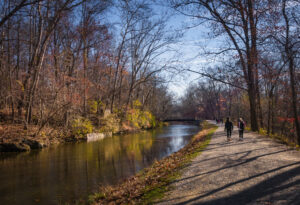
Autumn Morning on the Canal by Suzanne Lugerner
As autumn unfolds in the Park, it brings with it the promise of a breathtaking symphony of colors. While we can’t predict nature’s exact timing and intensity, the conditions seem favorable for a memorable fall foliage season in 2023. So, mark your calendars, prepare your camera, and embark on a journey to witness the splendid transformation that only nature can orchestrate.


Image Credit: Jane Schmidt
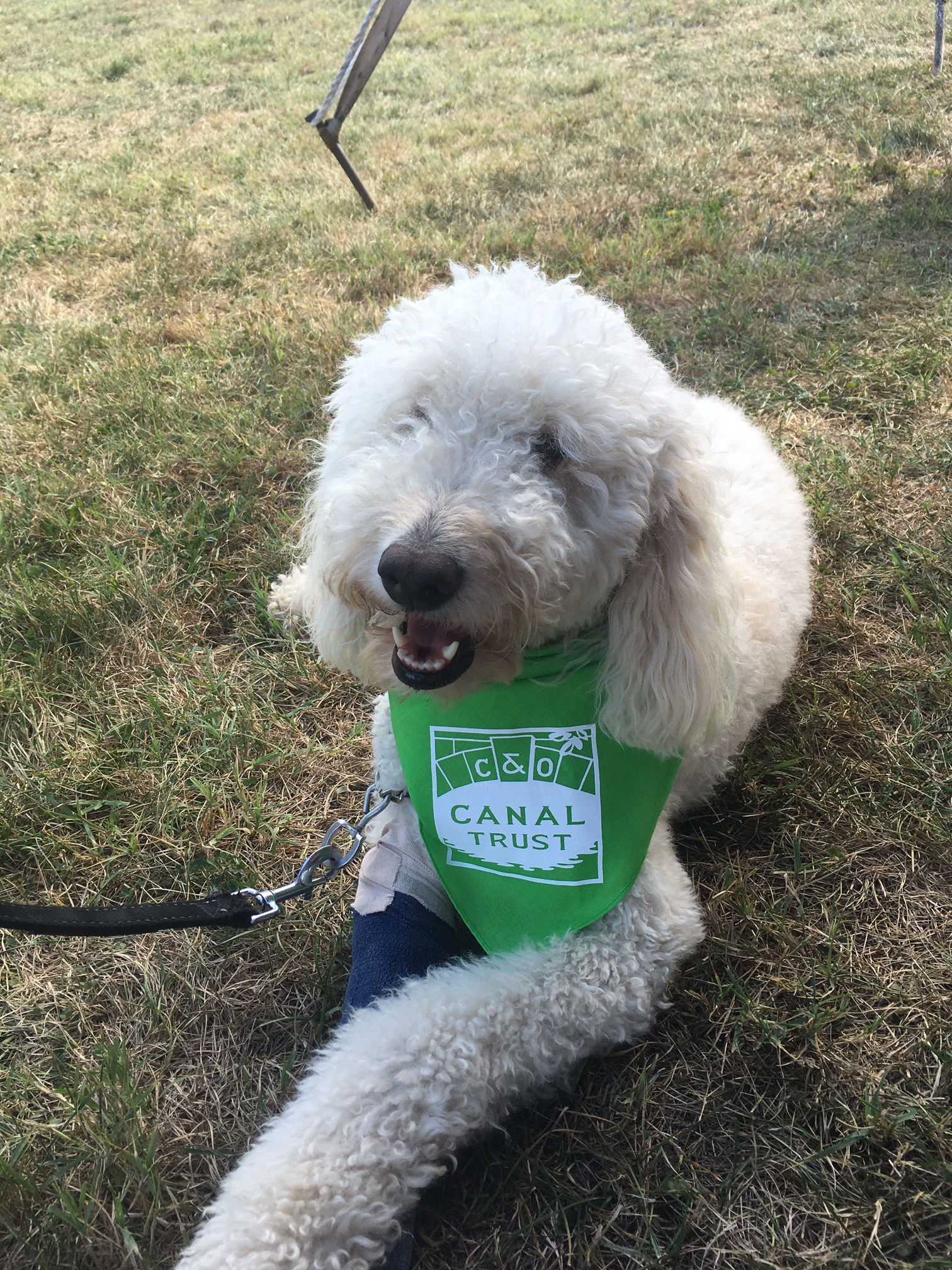
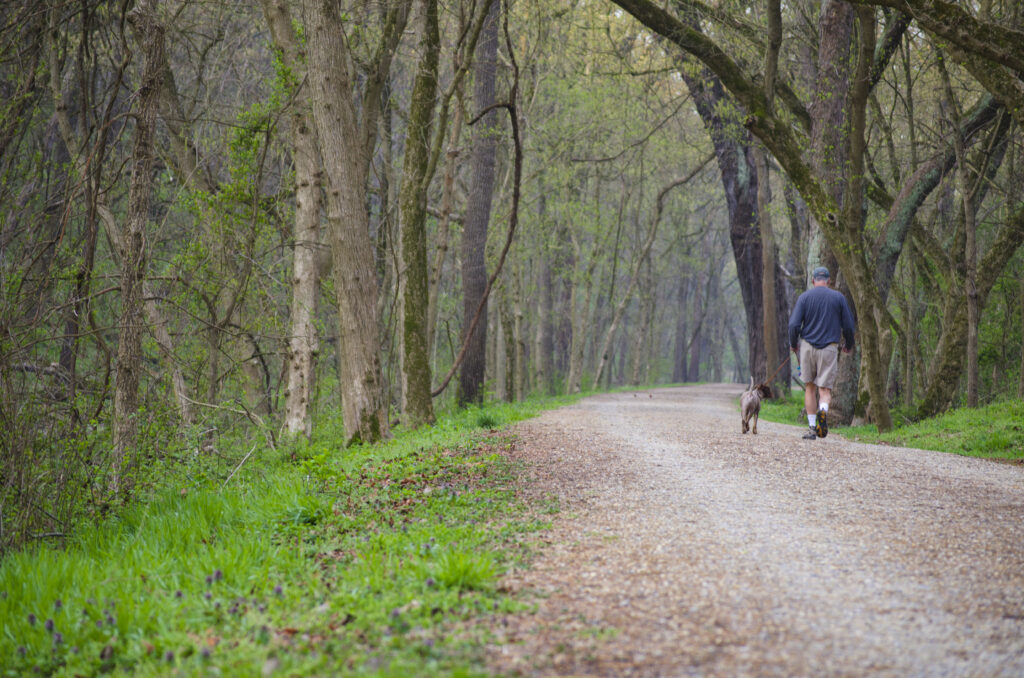
Photo by Trust Staff
The C&O Canal National Historical Park (NHP) is filled with natural beauty, rich history, and recreational opportunities. Many visitors enjoy sharing the Park with their four-legged companions. However, ensuring a positive experience requires proper planning in order to recreate responsibly. The National Park Service asks that all visitors with pets remember to B.A.R.K.:
Bag your pet’s poop
- Properly bag and dispose of your pet’s waste. The Chesapeake & Ohio Canal NHP is a trash-free Park, and garbage cans are not available. Pet owners should plan ahead to clean up and remove their trash, leaving the Park as they found it.
- Leaving bagged waste on the trail is littering. This includes parking areas, trailheads, signs, and milemarkers.
- Pet waste left on the ground makes a mess for others and harms the water quality in the park.
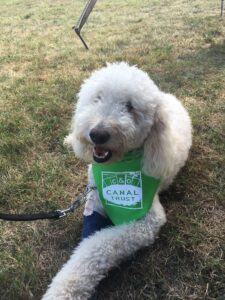
Tater the Doodle by Callie Fishburn
Always keep your pet on a leash
- Pets must be restrained on a leash no longer than 6 feet.
- GPS pet trackers are not leashes.
- Keeping pets on a leash protects people, plants, wildlife, and your pet.
Respect all animals
- Keep your pet at a respectful distance from any wildlife or other animals you encounter.
- Off-leash pets may spook horses or mules on the C&O Canal towpath.
- Off-leash pets can injure and alter the behavior of wildlife in the Park.
Know the rules
- Pets are not allowed on the Billy Goat Trail section A, or on the boardwalk to Great Falls.
- Stay on marked trails. Going off-trail can damage sensitive plants and cause erosion. Pets are more likely to pick up ticks when off-trail.
These regulations and laws exist to keep pets, visitors, and park resources safe. There are no exceptions to the regulations for carried pets (in arms, carriers, strollers, backpacks, etc.) in restricted areas of the park. For more information, please consult the Superintendent’s Compendium.
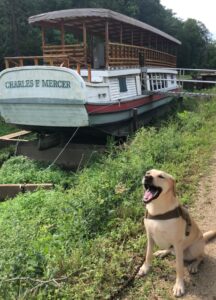
Dog and Charles F Mercer at Great Falls by Marc Llacuna
Please be mindful of weather conditions when bringing your pet to the park. Extreme temperatures, both hot and cold, can sometimes be dangerous to pets. Water fountains are available at some locations in the Park, but visitors should plan ahead and bring water for their pets.
Service Animals
Qualified service animals assisting visitors with disabilities are permitted throughout the Park and in all Park facilities. Service animals must be on a leash and picked up after.
Recreating responsibly with your dog in the C&O Canal NHP is not only about following Park rules but also about fostering a sense of stewardship for the natural and cultural resources. By knowing the regulations, keeping your dog on a leash, practicing good waste management, staying on designated trails, and being considerate of wildlife and other visitors, you can ensure a positive experience while preserving the Park’s integrity. Let’s cherish this remarkable resource and create lasting memories with our furry friends while following B.A.R.K. principles. By embracing these principles, we can continue to enjoy the beauty of the C&O Canal NHP for generations to come.

Thank you for volunteering with the C&O Canal Trust for the “Dog Days of Summer” music fest on Saturday, July 22nd presented by Cushwa Brewing and Interchange Tiki Bar & Brewery in conjunction with the C&O Canal Trust. The Trust will receive a portion of the proceeds to help our mission to preserve and protect the Historic C&O Canal National Historic Park.


Photo by Mark Cruz
After a day exploring the wonders of the C&O Canal National Historical Park (NHP), there’s nothing quite as satisfying as taking a break in a Canal Town. These towns, rich with history and small-town charm, provide a welcoming respite for weary adventurers. While meandering through the streets of most canal towns or just beyond, you’re bound to stumble upon a unique ice cream shop promising sweet treats that tantalize the taste buds. These shops offer a mouthwatering array of flavors, ranging from classic favorites to inventive creations.
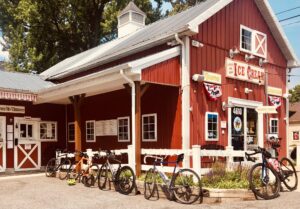
Photo courtesy of The Little Red Barn
Little Red Barn Ice Cream Cafe
4610 Lander Road, Jefferson, MD
Closest Canal Town: Point of Rocks
Located in a restored, hundred-year-old barn, the Little Red Barn Ice Cream Cafe is a fun spot to enjoy frozen treats. It also offers sandwiches, soups, salads, and expresso-based drinks. The options are limitless, with indoor dining, patio space, and a walk-up window with carry-out. The Little Red Barn offers a large selection of ice cream flavors, milkshakes, and sundaes made with Hershey’s ice cream. Follow their Facebook page for special flavors and more.
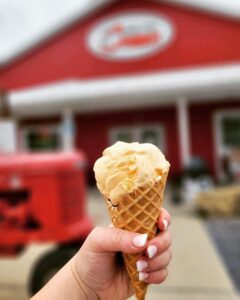
Photo courtesy of Rocky Point Creamery
Rocky Point Creamery
4323 Tuscarora Road, Tuscarora, MD
Closest Canal Town: Point of Rocks, MD
Rocky Point Creamery is a classic farm-to-cone style creamery located a little over a mile from the towpath in Point of Rocks. Part of Maryland’s Best Ice Cream Trail, the creamery rotates over 80 flavors of ice cream weekly and offers specialty sundaes and shakes. Be sure to visit their tractor-style playground, sunflower field in July and August, and events like food trucks and goat yoga. Weekly flavors and events are posted on their Facebook page.
A La Mode Cafe
113 Potomac Street, Harpers Ferry, WV
Canal Town: Harpers Ferry/Bolivar
A La Mode Cafe offers tasty desserts, including ice cream treats like milkshakes and sundaes. Hand-dipped ice cream is from Kawartha Dairy, and there are soft-serve options as well. The menu also includes a few breakfast and lunch items.
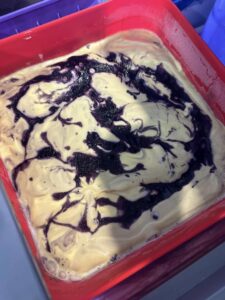
Photo courtesy of Battle Grounds Bakery & Coffee
Battle Grounds Bakery & Coffee
180 High Street, Harpers Ferry, WV
Canal Town: Harpers Ferry/Bolivar
Situated right in the middle of the historic lower town of Harpers Ferry, Battle Grounds Bakery & Coffee offers breakfast and pastries, salad and sandwiches, specialty coffees, cookies, and delicious frozen custard flavors. Follow them on Facebook.
Cannonball Deli
125-129 High Street, Harpers Ferry, WV
Canal Town: Harpers Ferry/Bolivar
Just a short walk across the Potomac River into Harpers Ferry, the Cannonball Deli is one of several walk-up ice cream spots on Potomac Street. It serves Hershey’s ice cream. The deli has indoor and outdoor seating, a tasty ice cream menu, and offers other menu items like burgers, pizza, salads, and burritos.
Creamy Creations
173 Potomac Street, Harpers Ferry, WV
Canal Town: Harpers Ferry/Bolivar
Just a short walk across the Potomac River into Harpers Ferry, Creamy Creations is another walk-up ice cream spot on Potomac Street, opposite the train station. You’ll find a variety of fun, unique hand-dipped flavors, along with traditional flavors and plenty of toppings to choose from.
Harpers Ferry Ice Cream Shoppe
408 Alstadts Hill Road, Harpers Ferry, WV
Canal Town: Harpers Ferry/Bolivar
The Harpers Ferry Ice Cream Shoppe features 16 flavors from local creamery Garber’s Ice Cream in Winchester, Virginia. The menu includes cones, cups, milkshakes, cookie sandwiches, and sundaes.

Photo courtesy of Amy & Alex’s Homemade Ice Cream and Coffee
Amy & Alex’s Homemade Ice Cream and Coffee
207 S Princess Street, Suite 2, Shepherdstown, WV
Canal Town: Shepherdstown, WV
Amy & Alex’s Homemade Ice Cream and Coffee opened in May of 2023, focusing on clean ingredients, meaning no artificial flavors and no artificial ingredients. Most of their ice cream add-ins are organic, and they offer a variety of traditional flavors as well as more unique flavors, like Honey Raspberry Blueberry Swirl, Mango Dragonfruit, and Coffee Crunch Bar. They always have two or three dairy-free coconut milk ice creams as well. Follow them on Instagram.
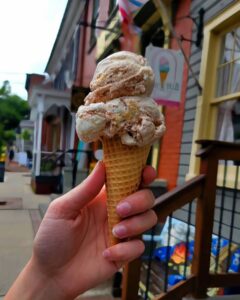
Photo courtesy of Rock Hill Creamery
Rock Hill Creamery
111 West German Street, Shepherdstown, WV
Canal Town: Shepherdstown, WV
Rock Hill Creamery, located in the heart of Shepherdstown, West Va., features ice cream made right in the shop using only milk, sugar, and heavy cream as the base. The menu features a variety of traditional and not-so-traditional ice cream flavors, as well as vegan sorbet. Flavors like Keylime Pie, Lavender Honey, Vanilla Chip, Zebra Cake, and Better Brownie Batter are sure to tempt your tastebuds!

Photo courtesy of Deliteful Dairy
Deliteful Dairy
16230 Long Delite Lane, Williamsport, MD
Canal Town: Williamsport, MD
Located close to C&O Canal access points at Cushwa Basin and McMahons Mill, Deliteful Dairy offers high-quality, grass-fed dairy products, including ice cream, butter artisanal cheeses, and farm-fresh craft milk selections. This seventh-generational farm is part of Maryland’s Best Ice Cream Trail and offers a variety of tasty ice cream treats. Visit them on Facebook for events and specials.

Photo courtesy of Scoop-A-Licious & More
Scoop-A-Licious & More
16904 Virginia Avenue, Williamsport, MD
Canal Town: Williamsport, MD
Scoop-A-Licious & More offers batch-churned ice cream from Windy Knoll Farm & soft-serve ice cream. They also have a wide variety of sundaes, milkshakes, snow cones, and other delicious ice cream treats.
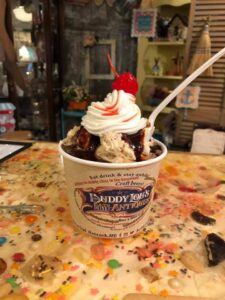
Photo courtesy of BuddyLou’s Eats Drinks & Antiques
BuddyLou’s Eats Drinks & Antiques
11 East Main Street, Hancock, MD
Canal Town: Hancock, MD
Just steps from the C&O Canal, Buddy Lou’s offers exceptional dining, unique artisan gifts, vintage treasures, and just plain fun! Their ice cream menu offers soft serve and Flavor Burst selections, with a multitude of topping choices. You can also get sundaes, milkshakes, and other ice cream treats.
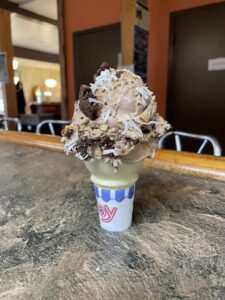
Photo courtesy of Queen City Creamery
Queen City Creamery
138 Baltimore Street, Cumberland, MD
Canal Town: Cumberland, MD
Queen City Creamy makes homemade frozen custard, sorbet, and frozen treats daily. There’s a Flavor of the Day Custard, a Flavor of the Week Sorbet, and a Sundae of the Week. The menu includes ice cream floats and even ice cream cakes, plus more! Stop in and enjoy flavors like Lemon Blueberry, Salted Caramel Cashew, and Caramel Old Bay. They were recently voted one of the best frozen custard places in the United States. Follow them on Facebook.
European Desserts and More
17 Howard Street, Cumberland, MD
Canal Town: Cumberland
Located just steps off the towpath, less than 500 ft from the end of the C&O Canal and the start of the Great Allegheny Passage trail, European Desserts and More is one of the shops at Canal Place. The shop offers six flavors of ice cream, including black raspberry and cookies & crème. Its specialty is traditional handmade desserts, like baklava, bee sting cake, and filo pastries. Follow the towpath south, and you will find a green field to eat your ice cream or other treats and view “The Cumberland,” a full-scale C&O Canal boat replica. This is the perfect place to treat yourself after your journey or fuel up for the start of your trip.
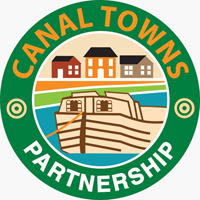 The next time you find yourself visiting the C&O Canal NHP, enjoy the simple pleasures of an ice cream treat in a canal town. We hope it will be the perfect ending to a great day! Click here for more information about the Canal Towns Partnership.
The next time you find yourself visiting the C&O Canal NHP, enjoy the simple pleasures of an ice cream treat in a canal town. We hope it will be the perfect ending to a great day! Click here for more information about the Canal Towns Partnership.
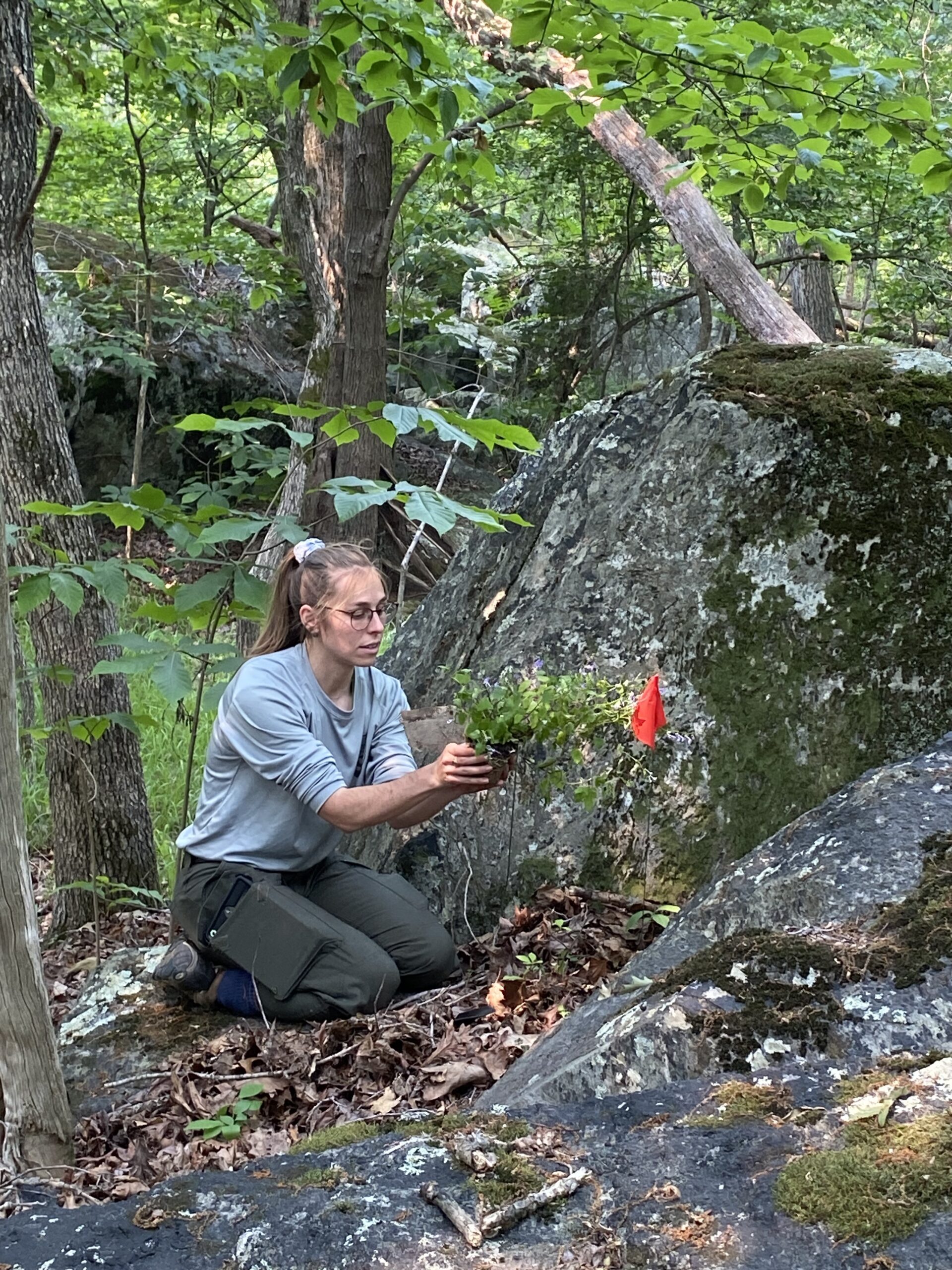
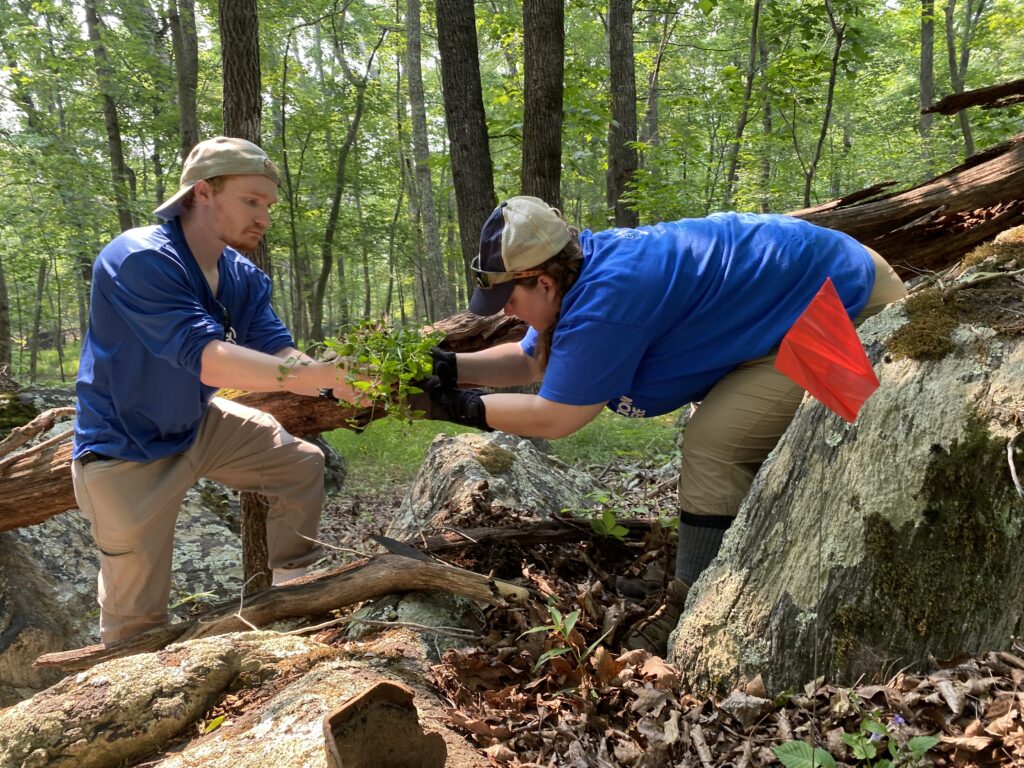
Student Conservation Association interns planting smooth rock skullcap at a site in the Potomac Gorge area. Photo by C&O Canal NHP/NPS.

Celebrate your love for the C&O Canal by sharing your personal story about the Park. Each story will take a look at a person’s relationship with the C&O Canal. Whether an NPS ranger, a volunteer, or a visitor, everyone has a story to tell about the canal! If you want to share your story, fill out the form below, email it to us at [email protected] or post it on your social media feeds with the hashtag #MyCanalStory. We could use your story here on our website!
Canal Community Story: Tamika Graham
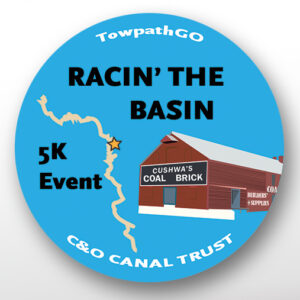 We’re bringing back our TowpathGO 5K, and this spring it’s coming to Williamsport! Join us May 6 for Racin’ the Basin. The 5K will start at 7 a.m. at Cushwa Basin, prior to our Canal Community Days cleanup.
We’re bringing back our TowpathGO 5K, and this spring it’s coming to Williamsport! Join us May 6 for Racin’ the Basin. The 5K will start at 7 a.m. at Cushwa Basin, prior to our Canal Community Days cleanup.
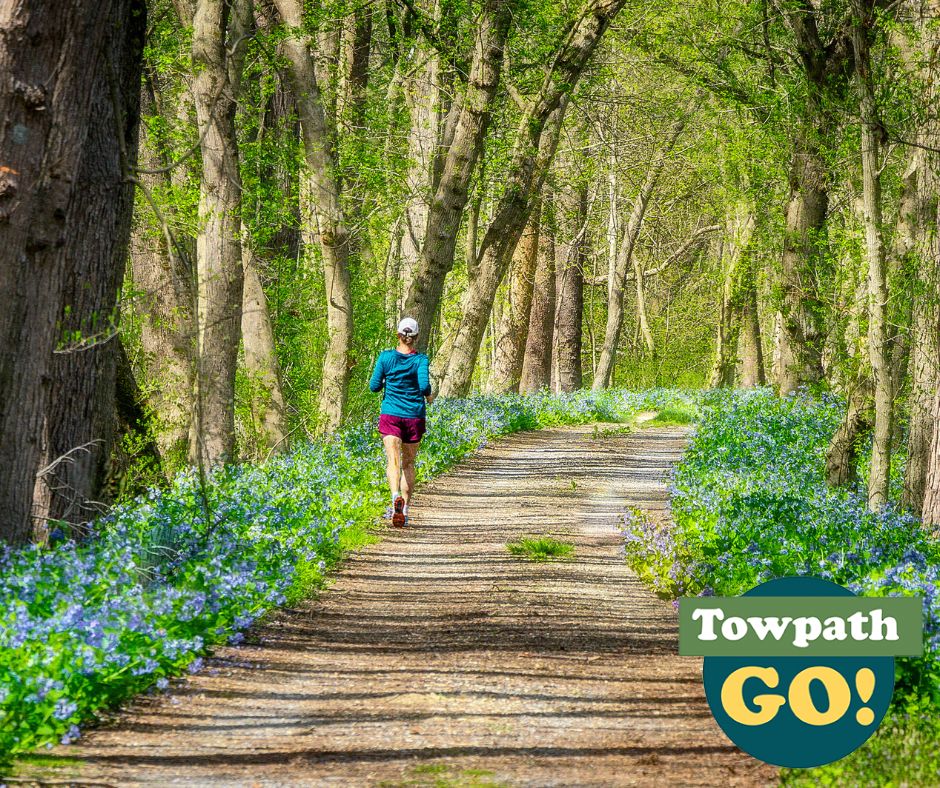
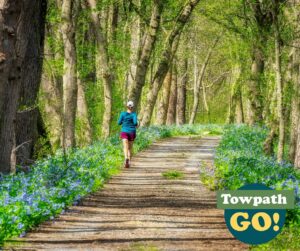
Photo by Paul Graunke
If you love the C&O Canal National Historical Park and enjoy recreating in the Park, we’ve got a great way for you to combine your passions and support the Park! Sign up for TowpathGO and rally support from your friends and family for this unique peer-to-peer fundraising challenge. Join us for this year’s TowpathGO!
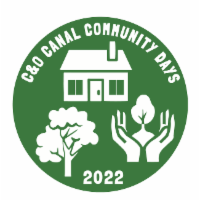
Congratulations to Brian Rimm on his winning design for this year’s Canal Community Days Logo Contest! We received a record number of design entries from more than 20 different artists, and are grateful to everyone in our Canal Community who took the time to enter. We hope to see you at our volunteer events this spring wearing this great design!
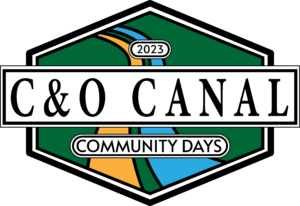
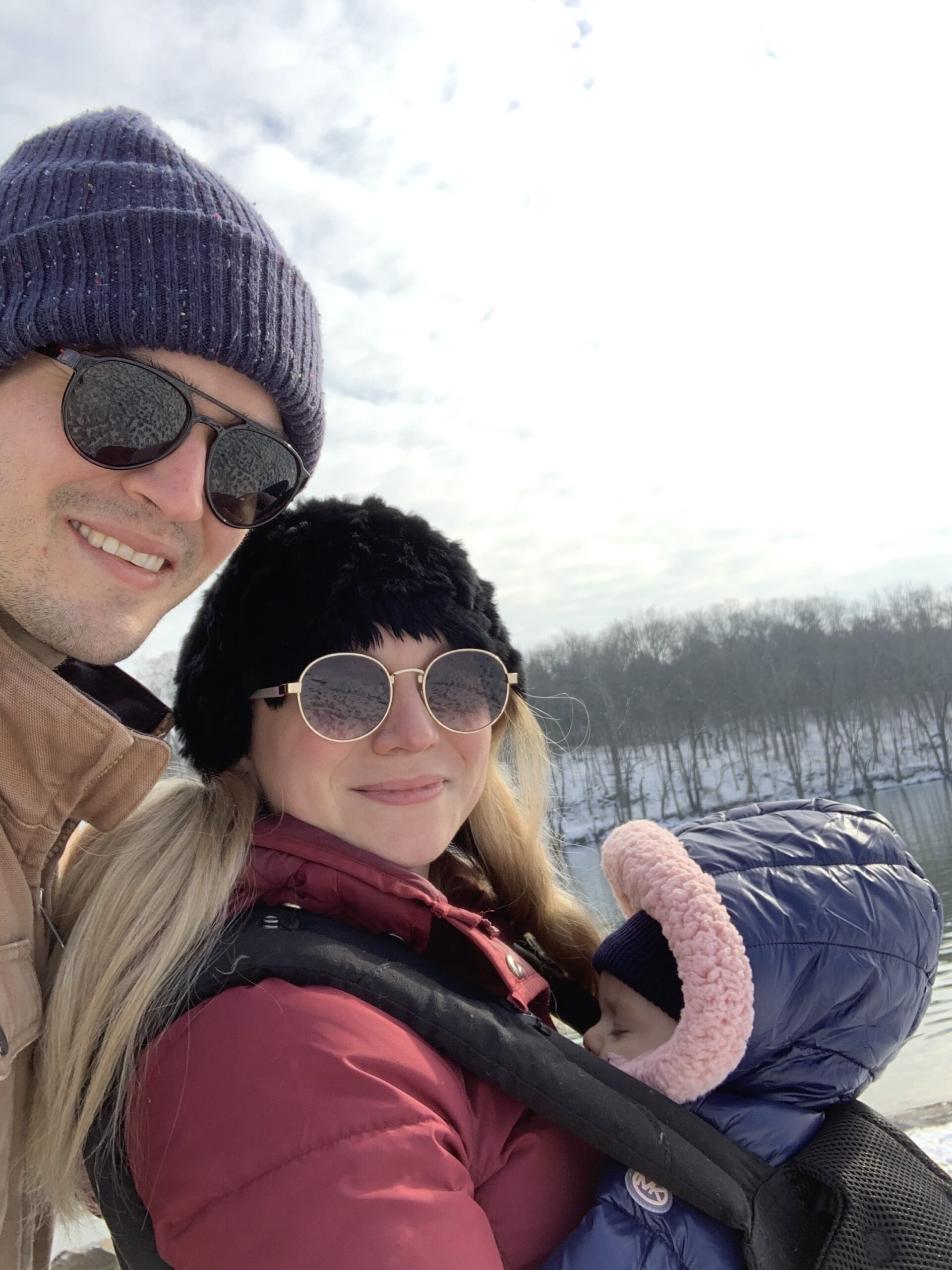
Get to know the new C&O Canal Trust President and CEO Lauren Riviello! Lauren is no stranger to the Trust; she’s been the director of development for two years, and her connection to the Park dates back to her childhood in Shepherdstown, West Virginia. We asked her a few questions as she steps into her new role with the Trust. Read More
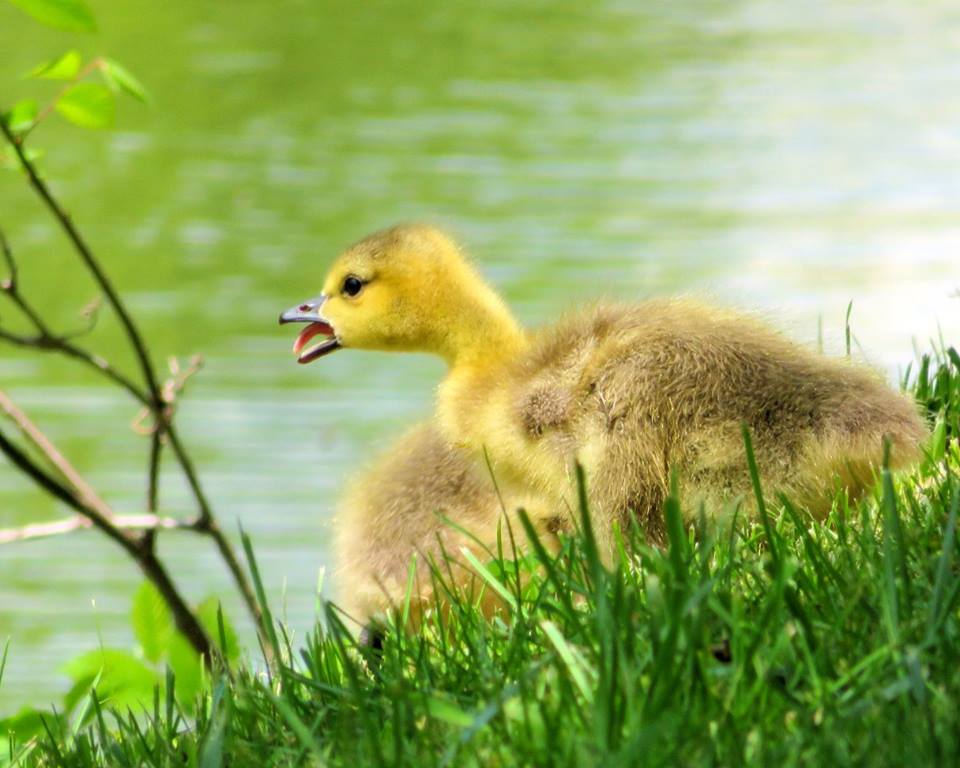
As spring has officially sprung, we here at the Trust can only hope for more consistent weather. And while there’s probably still a bit more cold weather to come, the next few weeks look like they could be the true beginning of warm weather for the Canal.
In honor of spring (slowly) coming to the area, we at the Trust have compiled a list of things we love about spring on the Canal. Read More
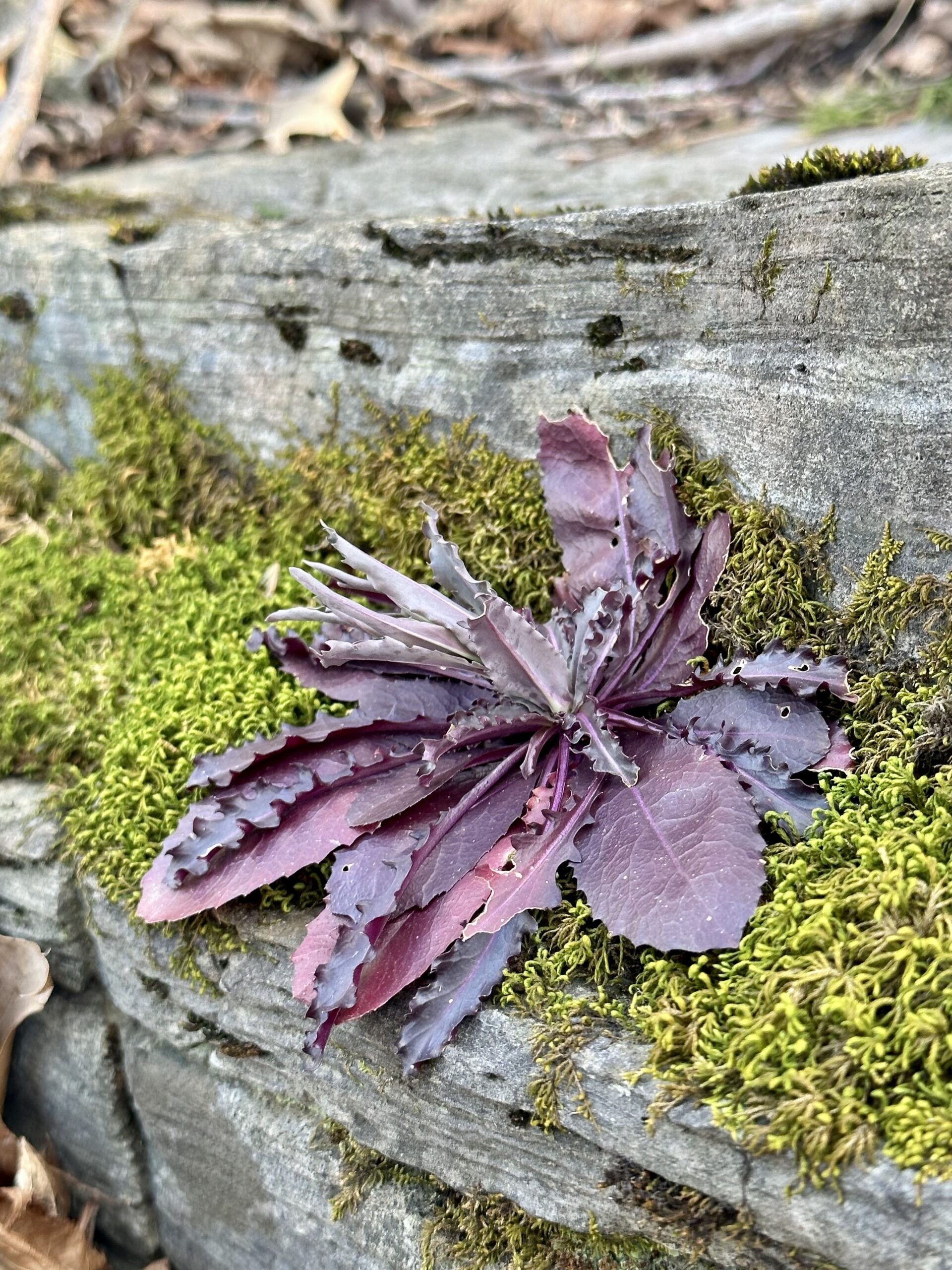
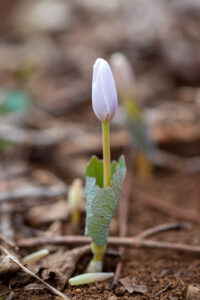
Bloodroot photo by Trust Staff
Native plants are an essential part of the ecosystem in the C&O Canal National Historcal Park (NHP), which is one of the most biologically diverse parks in the National Park system, especially in regard to plant species. The Park has recorded over 1,500 species of vascular plants, including over 260 non-native plant species, and more than 200 rare, threatened, and endangered (RTE) plants. The number of rare plants is one of the highest concentrations of state-listed rare plants in the eastern United States.
The Potomac River creates a mosaic of different natural habitats throughout the C&O Canal NHP. Native plants are the backbone of natural habitats and play a critical role in maintaining the balance of the ecosystem. They have evolved over thousands of years, adapting to the local climate, soil, and other environmental factors.
Here are some reasons why native plants are crucial for our environment:
- Native plants provide habitat and food for wildlife. They are the primary source of food and shelter for a wide range of wildlife species, including birds, insects, mammals, and reptiles. These plants provide essential nutrients and shelter for animals, including food for larvae and insects that pollinate flowers, fruits, and vegetables.
- Native plants support biodiversity. They play a vital role in supporting biodiversity. They provide food and shelter for insects, which, in turn, support other animals and plant species. Native plants also help to prevent soil erosion and maintain the balance of the ecosystem.
- Native plants are adapted to local conditions. They are acclimated to the local climate and soil, which makes them more resilient and better able to withstand drought, floods, and other environmental stresses. This means they require less maintenance and water, making them an excellent choice for homeowners and gardeners.
- Native plants improve soil health. They have deep root systems that help to improve soil health by increasing soil organic matter and reducing erosion. This means that they can help to prevent nutrient runoff and protect water quality.
- Native plants have cultural significance. They have been used for centuries by indigenous communities for medicinal, food, and spiritual purposes. By preserving native plant species, we can help to protect and celebrate cultural heritage.
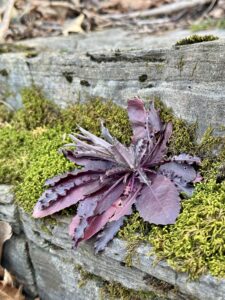
Rockcress Photo by Trust Staff
Native plants are an essential component of our natural environment. They play a vital role in maintaining the balance of the ecosystem in the C&O Canal NHP, at our homes, in our communities, and beyond. By promoting the use of native plants in landscaping and gardening, we can help to protect and preserve our natural environment for future generations.
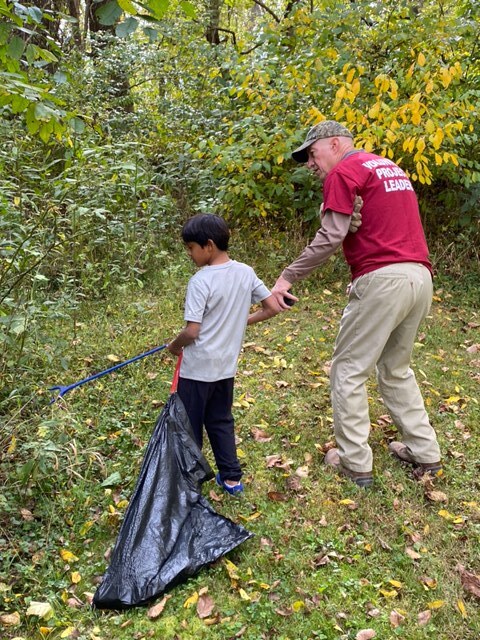
Celebrate your love for the C&O Canal by sharing your personal story about the Park. Each story will take a look at a person’s relationship with the C&O Canal. Whether an NPS ranger, a volunteer, or a visitor, everyone has a story to tell about the canal! If you want to share your story, fill out the form below, email it to us at [email protected] or post it on your social media feeds with the hashtag #MyCanalStory. We could use your story here on our website!
Canal Community Story: Don Ramsey
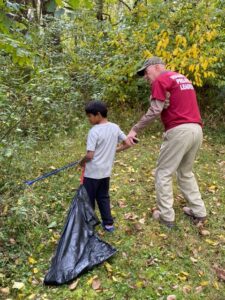
Photo by Anupah Shah
Don Ramsey is a dedicated C&O Canal Trust volunteer. Whether leading volunteer groups doing projects in the Park for Canal Community Days events or helping with our largest annual fundraiser Park After Dark, Don is always willing to roll up his sleeves and lend a helping hand.
During his childhood, Don’s family would go for picnics at various C&O Canal National Historical Park locations. In his teen and young adult years, he would adventure with friends to camp, bike, ice skate, hike, and canoe in the Park. Don remembers his longest bike ride with friends on the canal from Washington, D.C., to Harpers Ferry. “We had a breakdown of one of the bikes,” he recalls, “and after miles of taking turns riding and walking, we stopped at Brunswick and camped—so close, yet so far! Luckily, we were able to get dinner from Mackie machines at the YMCA at midnight.”
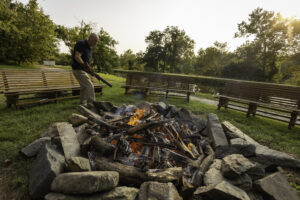
Photo by Turner Photography Studio
Don also had a memorable adventure by boat. “Can’t forget the rowboat overnighter from Fletchers,” he says. “Three of us left at dusk and rowed for a couple of hours upstream until we were too tired to row anymore, so we found a small area on the Virginia side to camp. When we woke up the next morning, we could still see Fletchers,” Don says, laughing.
Later in life, when Don had his own family, he took his young children on occasional picnics, small hikes, and canoe rides while visiting the Park. When his oldest son was in scouts, he became a scoutmaster and took scouts on hikes and a 50-miler bike campout along the canal. They also did canal cleanups after significant flood events. Don remembers one Whites Ferry cleanup organized by the Boy Scouts of America. “What a mess that was—but we had a great time doing it!”
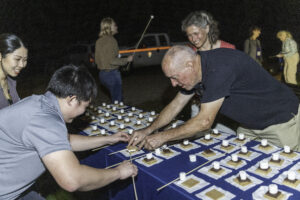
Photo by Turner Photography Studio
When his kids grew up and moved out, Don organized a few bike rides in the Paw Paw Tunnel area for family, friends, and coworkers. Then he discovered a volunteer opportunity in the Park. “I first got involved with a Clark Construction event at Harpers Ferry doing a cleanup and removing invasive plants,” Don says. “I’m not sure what year that was, but I was hooked and have been there whenever possible to join in on the fun!”
Don’s dedication to volunteering in his community extends far beyond the C&O Canal Trust. He volunteers for the Prince George’s County County Christmas in April program throughout the year and with the District of Columbia Building Industry Association’s yearly massive volunteer project sprucing up Washington, D.C., recreational areas. Before the COVID-19 pandemic, Don logged as many as 300+ hours of volunteer service a year.
Don is a regular Volunteer Project Leader (VPL) when the Trust has Canal Community Days events throughout the Park. He leads groups of volunteers tasked with various Park beautification projects with a smile and a passion for making the Park a better place for everyone. Don is welcoming to all, especially young people who want to try their hands at volunteer service. “Working with others and teaching the younger generation about the importance of doing good things for our national parks and others will help the environment, which helps the people and animals in the long run,” he says.
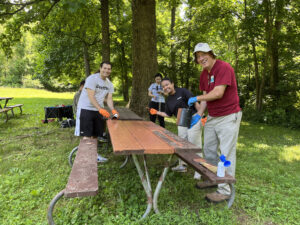
Photo by Trust Staff
Don’s favorite places in the C&O Canal NHP include Great Falls, the Paw Paw Tunnel, and the Harpers Ferry area. “Those are the places I suggest to people at work or elsewhere to get them interested in visiting the Park,” he says. Though he spends less time recreating in the Park these days than volunteering, it’s still very near and dear to Don’s heart, and he enjoys giving back to it. “Helping others makes me feel good,” Don says, “and doing this work along the C&O Canal is especially nice as not only do I get to visit such a wonderful place, but I can leave it in better condition than when I arrive!”
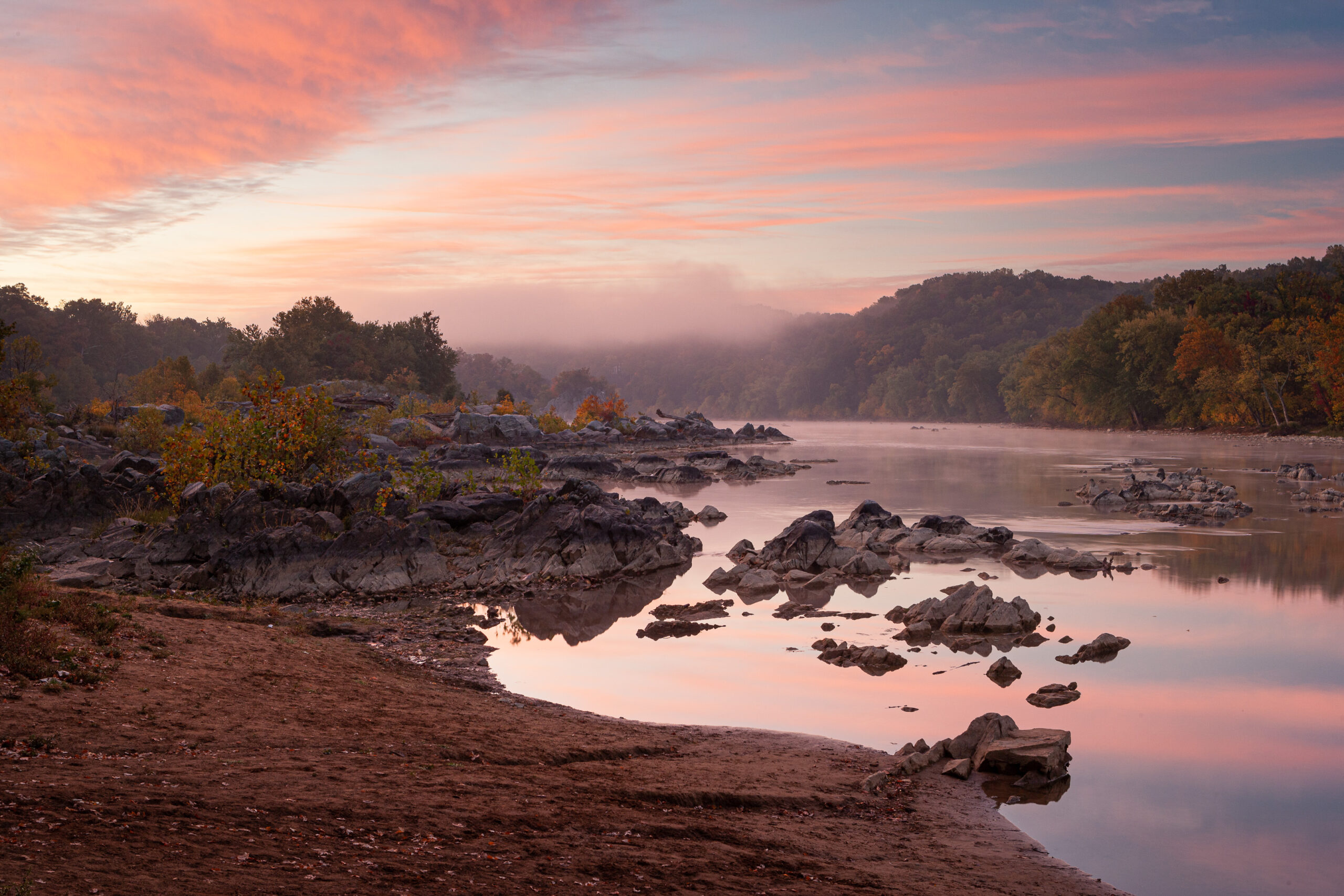
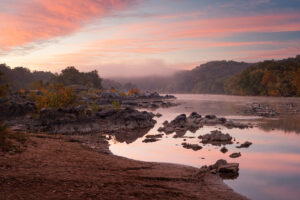
Photo by Roy Sewall
Roy Sewall, a founding leader of the C&O Canal Trust and a masterful photographer, passed away on January 17, 2023. Most people in our canal community are familiar with Roy through his beautiful photographs, shared widely by the Trust over the past 15 years.
“I became a serious photographer in 2001,” Roy wrote on his website, www.roysewallphotography.com. “I started with the Potomac River and the C&O Canal, and they were the subjects of my two books in 2005 and 2009. This area became a part of me forever.”
Not everyone knows that Roy was the first chairman of the Trust Board of Directors, serving the organization from 2007 to 2010. “He was the person I relied on the most when we were launching the Trust,” said Matt Logan, former president of the Trust. “He was the perfect partner.”
Roy shared many of his photographs with the C&O Canal Trust. They capture the beautiful scenery along the C&O Canal and our unique Canal Quarters program. “A Sewall photograph was distinct and perfectly taken,” said Francis Grant-Suttie, vice chairman of the Trust’s Board of Directors, who was fortunate to study photography with Roy.
We aspire to Roy’s high standards as an organization and as canal enthusiasts. Roy’s love for the C&O Canal will live on through the images he captured over the years. His family remains in our thoughts. You can read his obituary here.
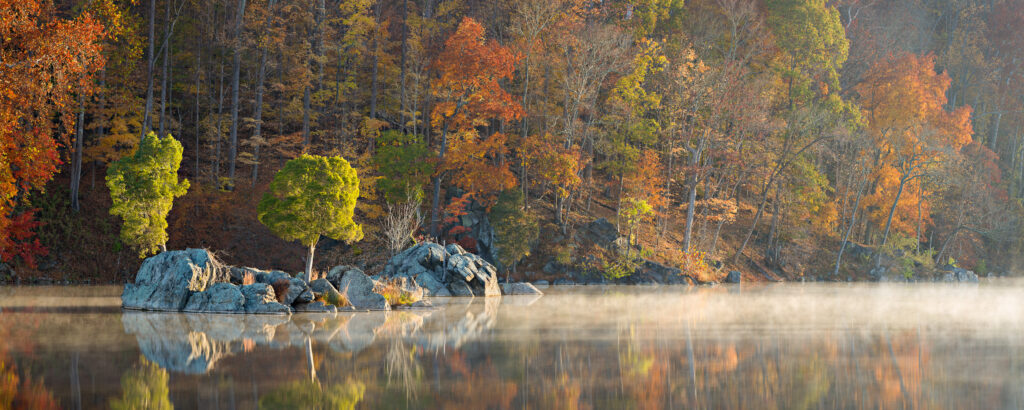
Photo by Roy Sewall
